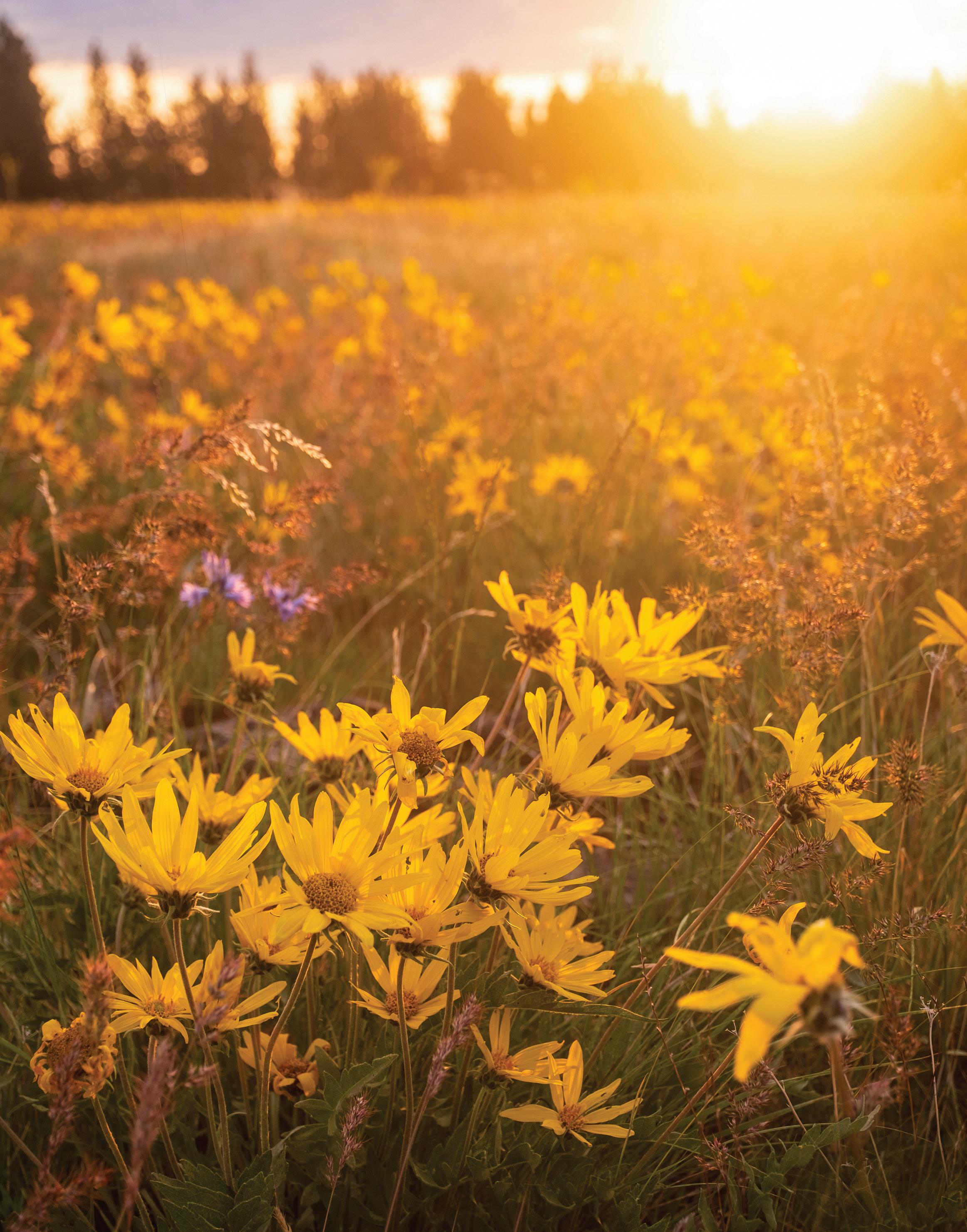









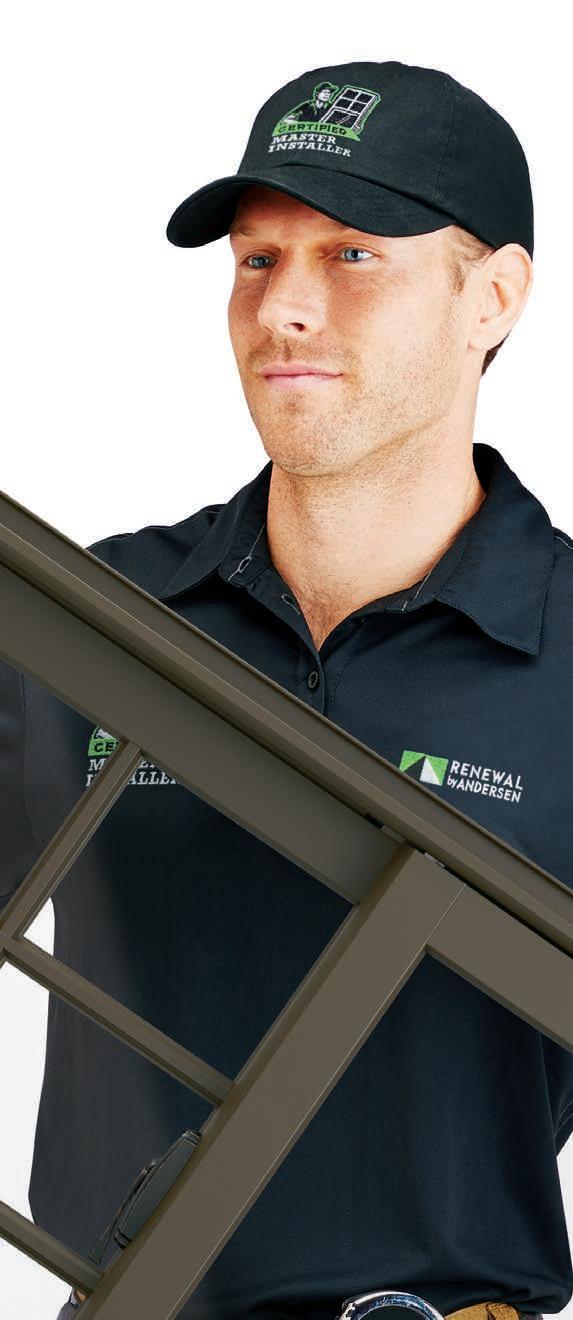












August 2025 • Volume 72, No. 8
CEO Michael Shepard
SENIOR VP OF CONTENT Leon Espinoza
EDITORIAL DIRECTOR Chasity Anderson, CCC
DEPUTY EDITORIAL DIRECTOR
Noble Sprayberry
SENIOR EDITOR Jennifer Paton, CCC
ASSISTANT EDITORS Victoria Hampton, CCC; David Herder, CCC; Sable Riley, CCC
ASSOCIATE EDITORS
Valeri Saldanha Rosa, Nina Todea
PUBLICATIONS PRODUCTION SR. MANAGER
Elizabeth Beatty
SENIOR PUBLICATIONS COORDINATOR
Alyssa McDougle
Ruralite (USPS 397-460) is published monthly for members for $5.43 per year, plus postage, by Pioneer Utility Resources Inc., 5625 NE Elam Young Parkway, Suite 100, Hillsboro, OR 97124—a not-for-profit Oregon cooperative corporation—to serve the communication needs of 46 consumer-owned electric utilities in Oregon, Washington, Alaska, Idaho, Nevada and California. Preferred periodical postage paid at Hillsboro, Oregon, 97123 and additional mailing offices. © 2025 Pioneer Utility Resources. All rights reserved. Reproduction in whole or in part without written permission is prohibited.
Postmaster: Send address changes to Ruralite, 5625 NE Elam Young Parkway, Suite 100, Hillsboro, OR 97124-6454
HOW TO CONTACT RURALITE
Subscription services:
Nonmember subscriptions $15 (U.S.) per year; $25 per year (foreign). Prepayment required. Allow 4-8 weeks for first issue. Be sure to identify which local edition you want to receive.
Address Changes:
Utility members, contact your local utility. Subscribers, call us at 503-357-2105, option 3, or email mailingdept@pioneer.coop.
Back issues:
Back issues and extra copies are $3. Prepayment required. Supply is limited. Be sure to identify edition, month and year. Call first if ordering back issues to check availability.
To contact Ruralite: Ruralite magazine is published by Pioneer Utility Resources, P.O. Box 1306, North Plains, OR 97133-1306; 503-357-2105; email: info@pioneer.coop. For more information, visit pioneer.coop.
DISPLAY ADVERTISING INQUIRIES
American MainStreet Publications
611 S. Congress Ave., Suite 504 Austin, TX 78704
800-626-1181 or 512-441-5200

For supplemental and interactive content, search @Ruralite on your favorite social media sites.
Some people see potential where others see problems, growth where others see limitations.
This month’s stories celebrate those who have learned to nurture. Emily Blessington didn’t grow up on a farm, but she discovered her calling in the controlled environment of Farmbox Greens, where seeds transform into harvest-ready greens in just seven days.
“If you have a passion for plants, and if you’re willing to learn, then you can learn anything,” she tells us.
Her journey proves that sometimes the most fulfilling paths are the ones we never expected to take.
Brian Rusk found his own unexpected path in aquaponics, where fish and plants work together in perfect balance. After decades as a geology professor, he discovered that tending to this living system—naming his koi, talking to them, watching them thrive alongside his greens—brought him more joy than any classroom ever could.
“As long as they’re in balance, they can continuously work together,” he explains, describing both his farm and his new life.
These modern cultivators understand something timeless—growth requires both patience and innovation. Each part of the story, beginning on Page 12, reveals how traditional farming wisdom adapts to new challenges.
Even our kitchen feature celebrates this spirit of cultivation. Fresh basil becomes the foundation for everything from classic pesto to inventive vinaigrettes. Each recipe honors
the herb’s journey from seed to plate, transforming simple ingredients into something memorable.
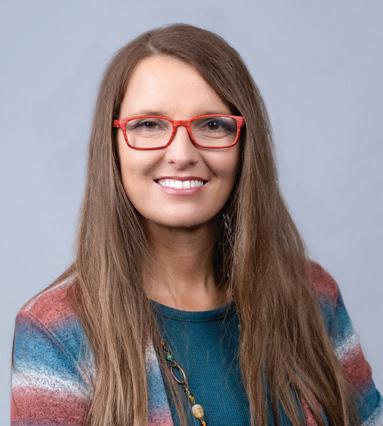
Dave LaBelle’s photography column reminds us that cultivation isn’t always about plants. Sometimes it’s about cultivating awareness— learning to see the stories that unfold when we pay attention to gestures and body language, the quiet moments that speak louder than words.
What draws my attention to these cultivators is their willingness to tend patiently to what they’ve planted. They understand the most rewarding growth often happens in controlled environments where every element—light, nutrients, timing—receives careful attention. They’ve learned innovation doesn’t mean abandoning tradition. It means finding new ways to honor what we’ve always known about nurturing life.
As summer abundance surrounds us, I find myself wondering what I’m cultivating in my life. Are there dreams that need more deliberate attention? Skills that deserve patient development? Relationships that could flourish with better balance? Sometimes the most meaningful harvests come from the gardens we tend with daily care.
Until next time, Chasity Anderson
Editorial Director

Spotlight, Page 12 The Wall That Heals Up Close, Page 10
A Growing Enterprise Farmers embrace hydroponic and aquaponic systems
16
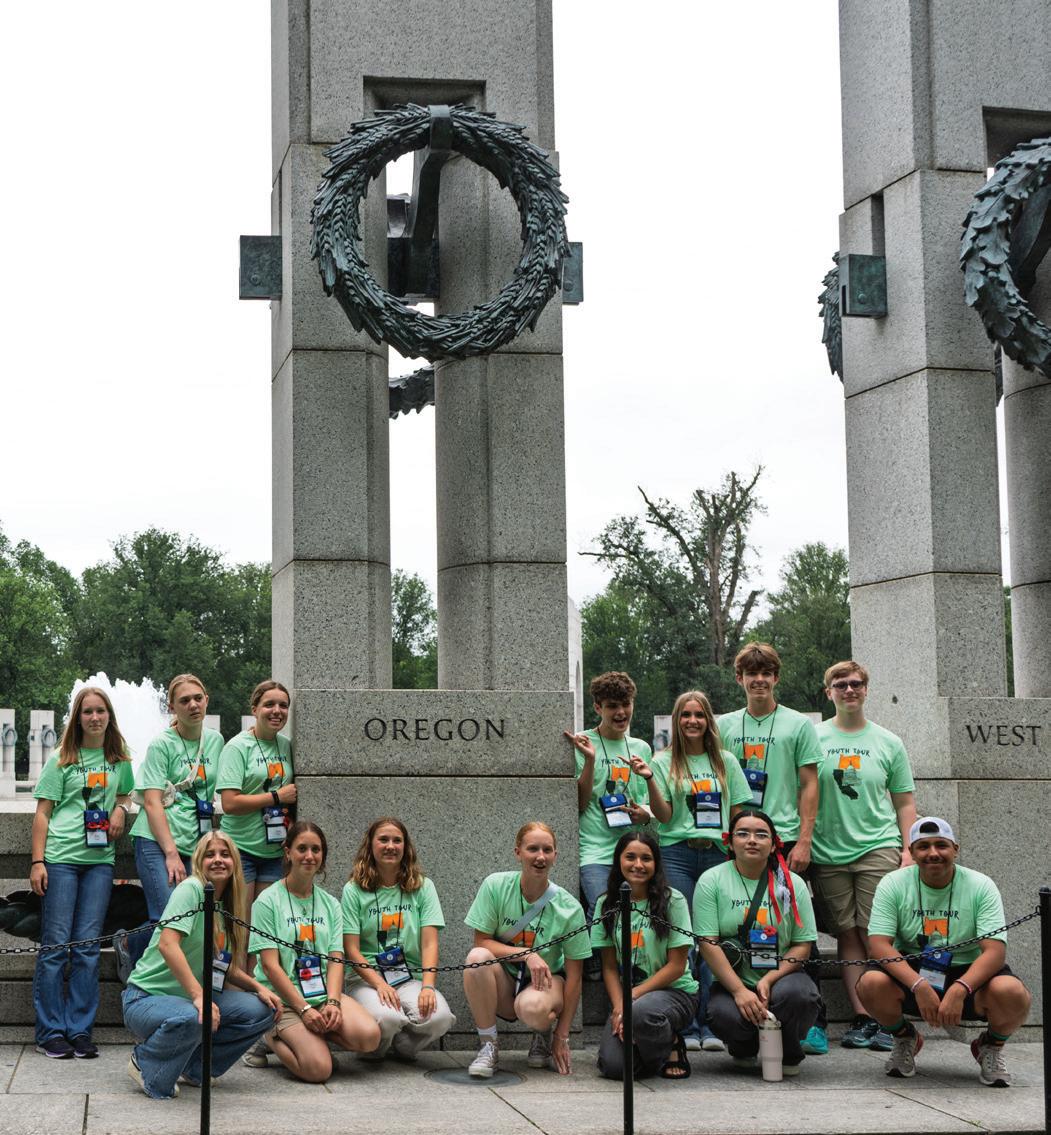
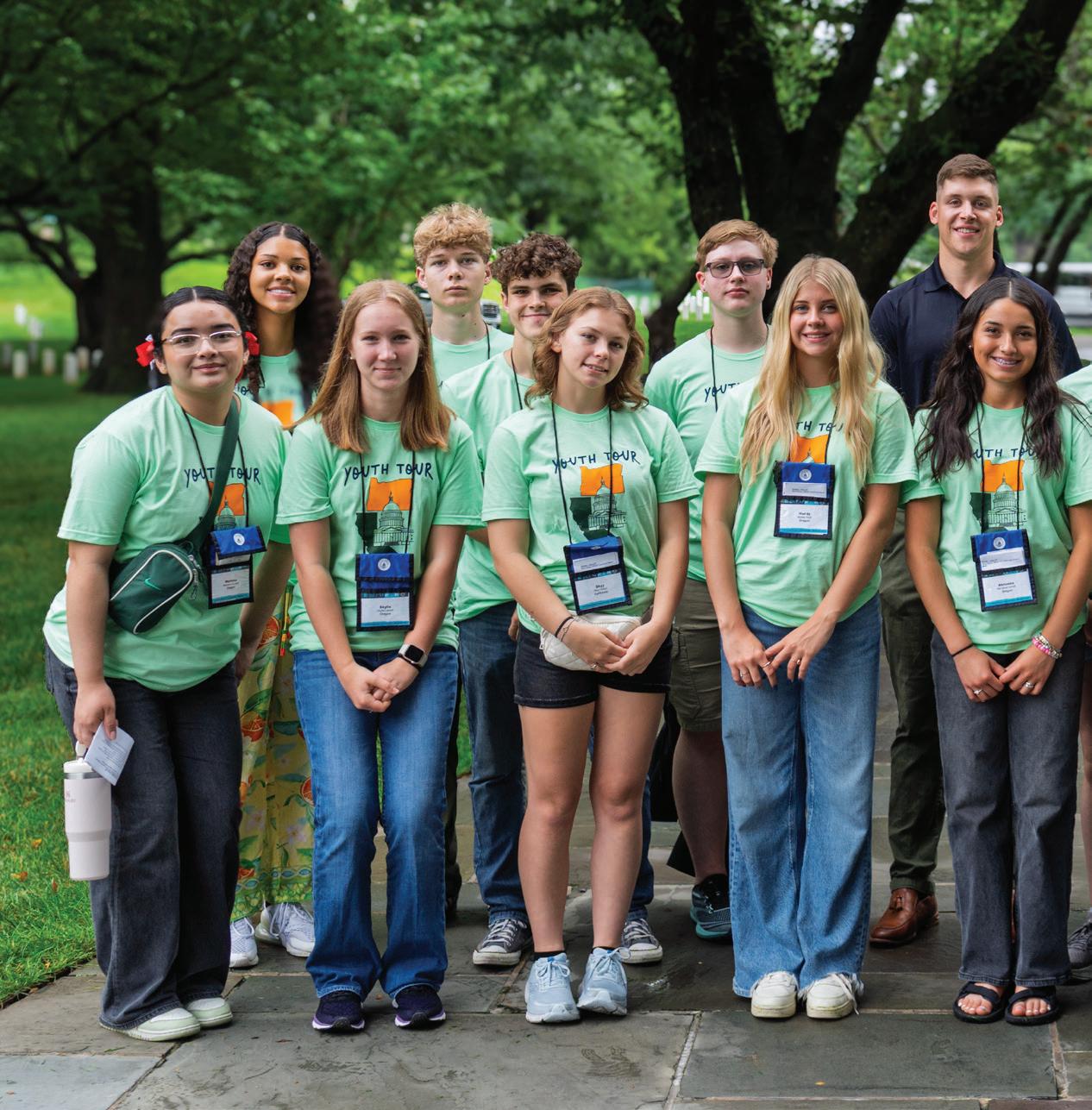
By Shane Stenquist, Manager of Communications, Oregon Trail Electric Cooperative
Each year, electric cooperatives across the United States select youth delegates to attend the annual Electric Cooperative Youth Tour in Washington, D.C. This year, Oregon Trail Electric Cooperative selected three local high school students to join more than 2,000 other youth delegates, chaperones and staff for this incredible leadership experience.
Youth Tour is a program organized through the National Rural Electric Cooperative Association and offered by OTEC and other electric cooperatives to
high school students from within their cooperative’s membership. Each year since the late 1950s, Youth Tour has brought students to the nation’s capital for one week in June to learn about rural electrification, the political process and the valuable role of electric cooperatives. During the trip, the students meet their elected officials, tour historic sites and build strong connections with peers from across the country.
For Maddy Rudi, Jaxson Everson and Boyden Weaver, the 2025 Electric Cooperative Youth Tour was much more than a trip—it was a transformational experience. Upon returning, they each expressed how valuable the Youth Tour was for them.
The immersive week connected them to the democratic process in a new, deeper way while also helping them gain a better understanding and appreciation for what OTEC and other electric cooperatives do
in and for their communities.
The students from OTEC territory made quite an impression on the Oregon chaperones as well. When it was time to return home, one of the chaperones thanked the OTEC students for being so well behaved and invited them to participate in the future as part of Youth Leadership Council. YLC is for Youth Tour alumni who want to continue to develop their leadership skills and help with future Youth Tour or other events.
OTEC and the OTEC Member Foundation are proud to support Youth Tour as part of our efforts to invest in the next generation of leaders and give back to the communities served in Baker, Grant, Harney and Union counties. n
Planning is already underway for the 2026 Youth Tour. Applications are accepted from high school juniors in OTEC’s service area beginning in December. Learn more and apply at otec.coop/youthtour.
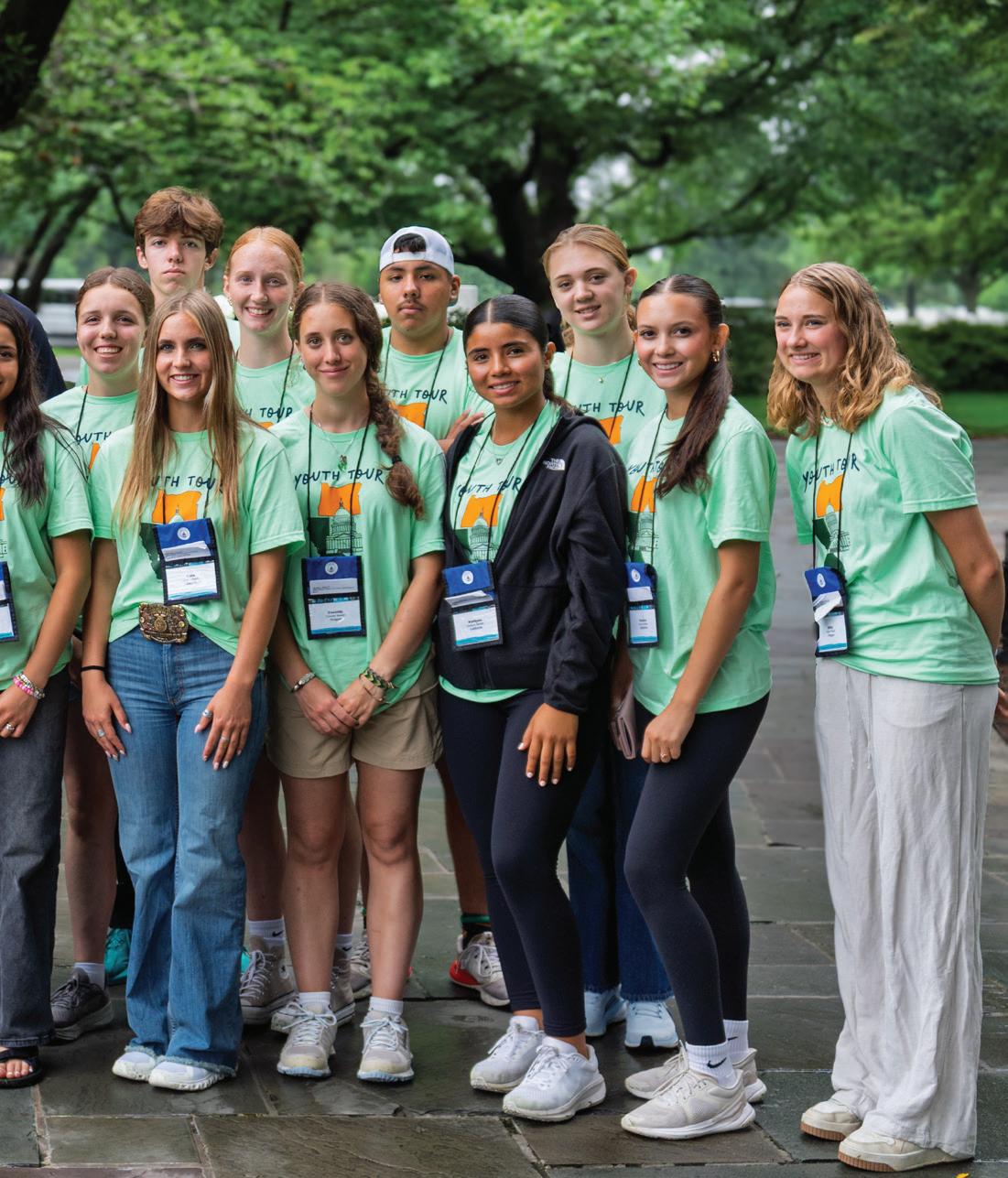
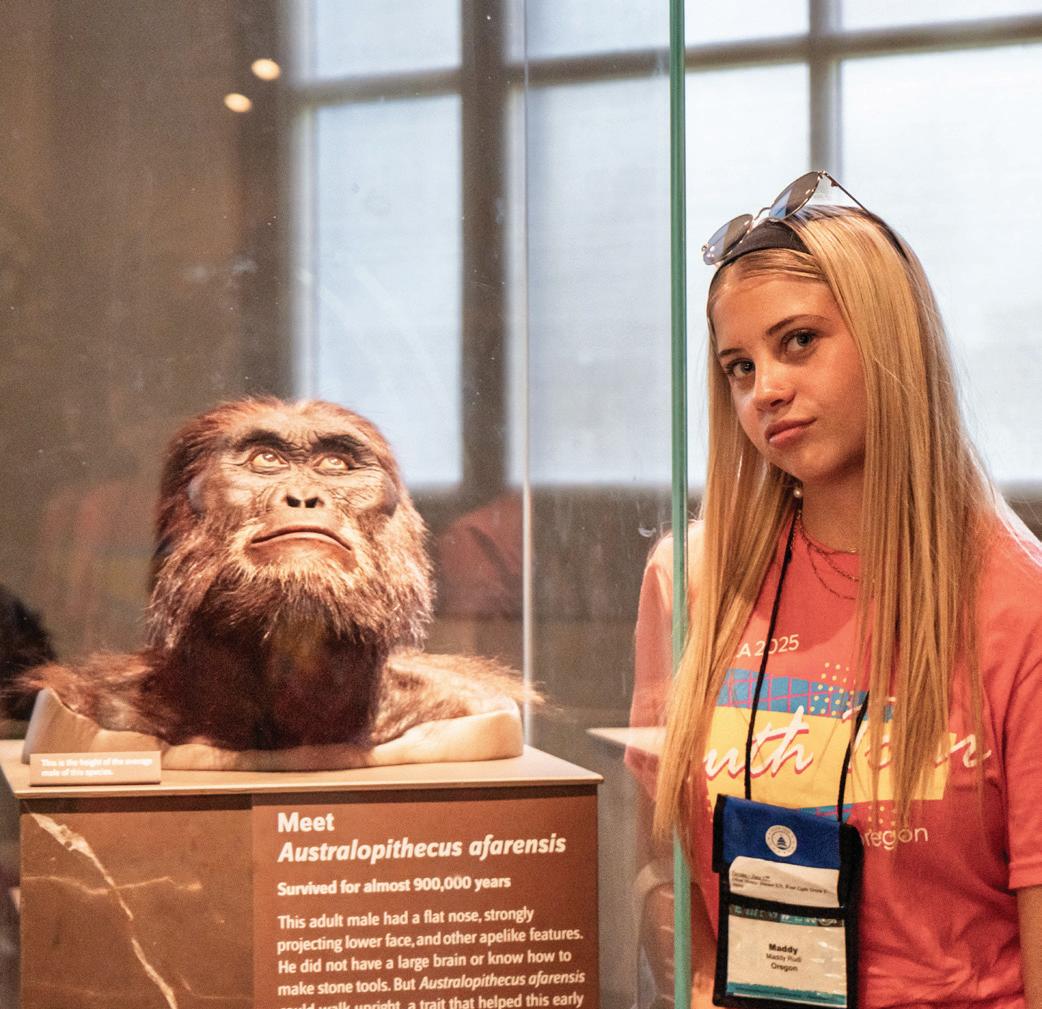
Baker City High School
I was so incredibly honored to be chosen to represent OTEC on the Youth Tour. I absolutely loved being able to have the opportunity to interact with people from all different walks of life and parts of the country. I feel learning about the impacts electric cooperatives have not just on our power for everyone, but for our entire community, was so incredibly powerful and something I will never forget. My favorite place to go was when we went to the Marine Corps Museum. I am very grateful to have been able to go with the people I was able to.
Baker City High School
My time in Washington, D.C., was unforgettable. Standing in the heart of our nation’s capital opened my eyes. There was something so powerful about being surrounded in our country’s history, the monuments and the overall energy of Washington, D.C. This trip was an important investment, as every participant of the Youth Tour walked away with a new understanding of our nation and the unlimited possibilities of the future. Meeting people from around the country allowed me to build new skills, new perspectives and a stronger sense of purpose. Seeing places I have only read about made me feel connected to something so much bigger than myself, and it left me feeling proud of this country’s future.
Jaxson Everson
Dayville High School
This trip was truly amazing from start to finish. I found myself making new friends, having new experiences and overall enjoying myself. I’m so glad I was able to be a part of this program, and I’m grateful for the friends I made along the way.
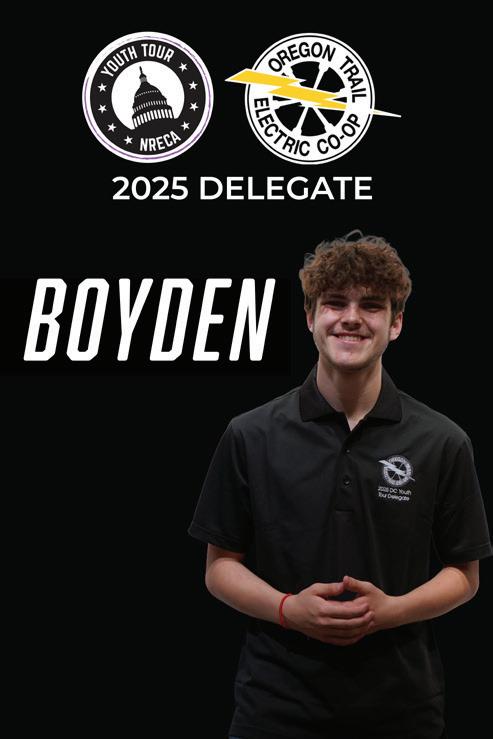
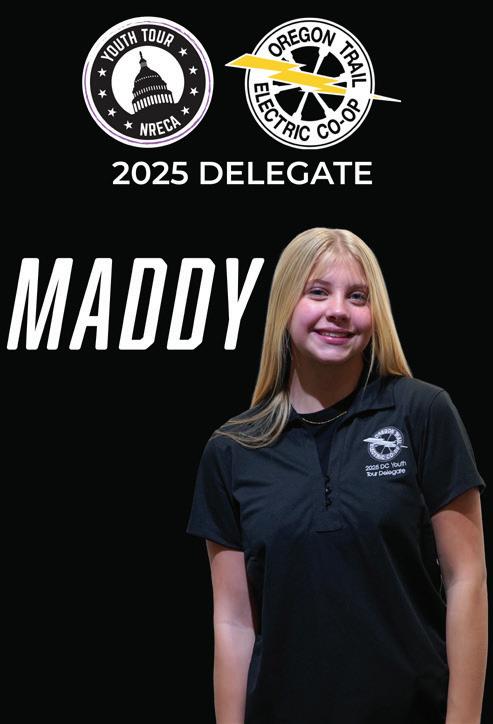
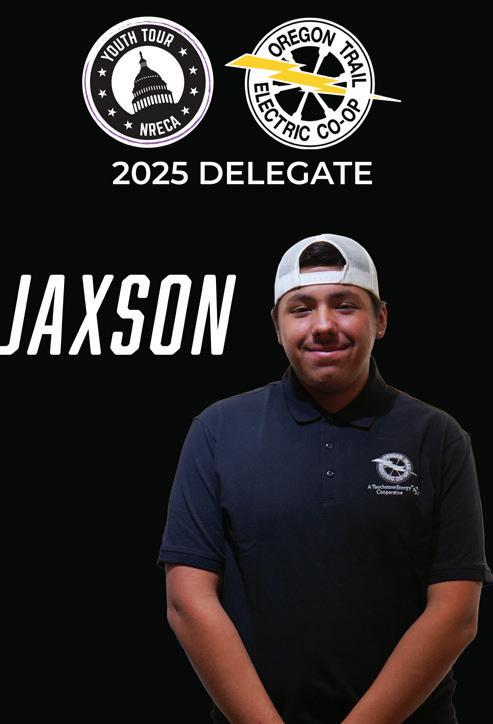

By Drew Woolley
Everyone likes finding ways to save on their energy bill. But watching the thermostat like a hawk, turning off lights behind everyone in the house and sweating an investment in energy-efficient appliances isn’t much fun, especially when you’re trying to get the kids to play along.
Fortunately, the people at utilities like Umatilla Electric Cooperative, based in Hermiston, Oregon, have been working to make energy savings more approachable for decades.
“We really take the approach of educating kids from elementary school clear to buying your first home when it comes to energy saving,” says Jodie Thomas, public relations supervisor at Umatilla Electric. “We want to teach kids what a kilowatt-hour is and help them
understand what that means for paying their bill so they aren’t learning about it the first time they have to pay it themselves.”
To that end, one of Umatilla Electric’s most successful programs for nearly 30 years is its Hydromania Summer Science Camp, which teaches fourth and fifth graders the fundamentals of conserving energy. It introduces core concepts about how electricity works and how to use it safely.
After decades of educating kids of all ages, the team at Umatilla Electric has learned a few helpful tricks to resonate with younger audiences. Hands-on activities, such as asking kids to look through their backpacks for electronic devices and calculating how much energy they use, can drive home just how much electricity they use in their daily lives. Meanwhile, avoiding technical terms like

AI-GENERATED ILLUSTRATION BY FREEPIK/BRANDON POMRENKE
“energy efficiency” can help saving energy feel less daunting and more fun.
Even so, Jodie finds some of the most effective ways to drive home the importance of energy conservation are the routine reminders members may have heard from their parents growing up. Luckily, there are still plenty of ways to teach your kids the importance of energy conservation while having fun as a family.
Here are some fun ways to encourage energy efficiency and conservation at home: Cook a family-powered dinner. Have the whole family help cook dinner with one rule: No electricity is allowed. Avoid using major kitchen appliances like electric ovens, blenders, mixers or microwaves to teach kids about common ways your family uses electricity during peak demand times. Top it all off with some no-bake treats.
Take turns on power patrol. Every child enjoys being in charge from time to time. Take turns letting everyone in your family be responsible for enforcing good energy habits around the house for a week.

You can even set up a point system for every time they notice a light left on in an empty room, unplug unused electronics chargers or adjust the thermostat to a more efficient setting. Offer prizes and rewards to encourage them to be mindful of energy use every day.
Build an energy-efficient dream home. Encourage everyone to design their dream home with energy-saving features in mind. This is a great way to introduce ideas like solar panels, efficient appliances and sustainable building materials. Break out the crayons and art supplies to bring their homes to life, or use household crafts to build models.
Play energy-saving bingo. Make bingo cards with squares for energy-saving actions like using natural light instead of lamps or ceiling lights, unplugging devices, turning off lights and cooling off the temperature by opening a window. Kids can cross out each square as they complete each task, and the first one to bingo gets a prize.
Have power-free fun. Designate one night a week as power-free time when everyone in the family turns off phones, computers and TVs together. Play a board game, spend time reading your favorite books or enjoy some outdoor activities technology-free. Save on your electric bill,
teach the importance of reducing energy use during peak periods and get some valuable family time all at once.
Make an energy-saving scavenger hunt. Make up a list of energy-saving practices, such as updating light fixtures with LED bulbs, turning off lights in empty rooms and unplugging unused devices. Challenge your kids to search the house and check off an example of each scavenger hunt item. You can celebrate with small prizes or treats for each energy-efficient discovery they make along the way.
Create energy-efficient art. Kids enjoy seeing their artwork displayed, so put those creative skills to work on energyefficient reminders around the house. Spend arts and crafts time teaching your kids about some of the steps they can take to save energy around the house. Make fun signs to serve as daily reminders to close the fridge quickly, turn off lights and only change the thermostat as a last resort.
Keep “phantom power” waste bottled up. Phantom energy—the electricity devices use even when they are turned off—can be a tricky concept for kids to understand. Illustrate it in a fun way by adding marbles to a glass bottle or jar every time someone spots an unused

device still plugged in. Set a goal and reward yourselves when everyone keeps phantom energy use down.
No matter what you do to keep energy savings fun around the house, the most important part of instilling good habits is reliably reminding your family of the little steps they can take to be more efficient.
“The biggest challenge is consistency,” Jodie says. “We used to focus on efficiency in the spring and fall, going into our high and low seasons. But we’re always looking at the greater electric grid, and we’ve found it’s much more effective to give people a reminder throughout the year.” n
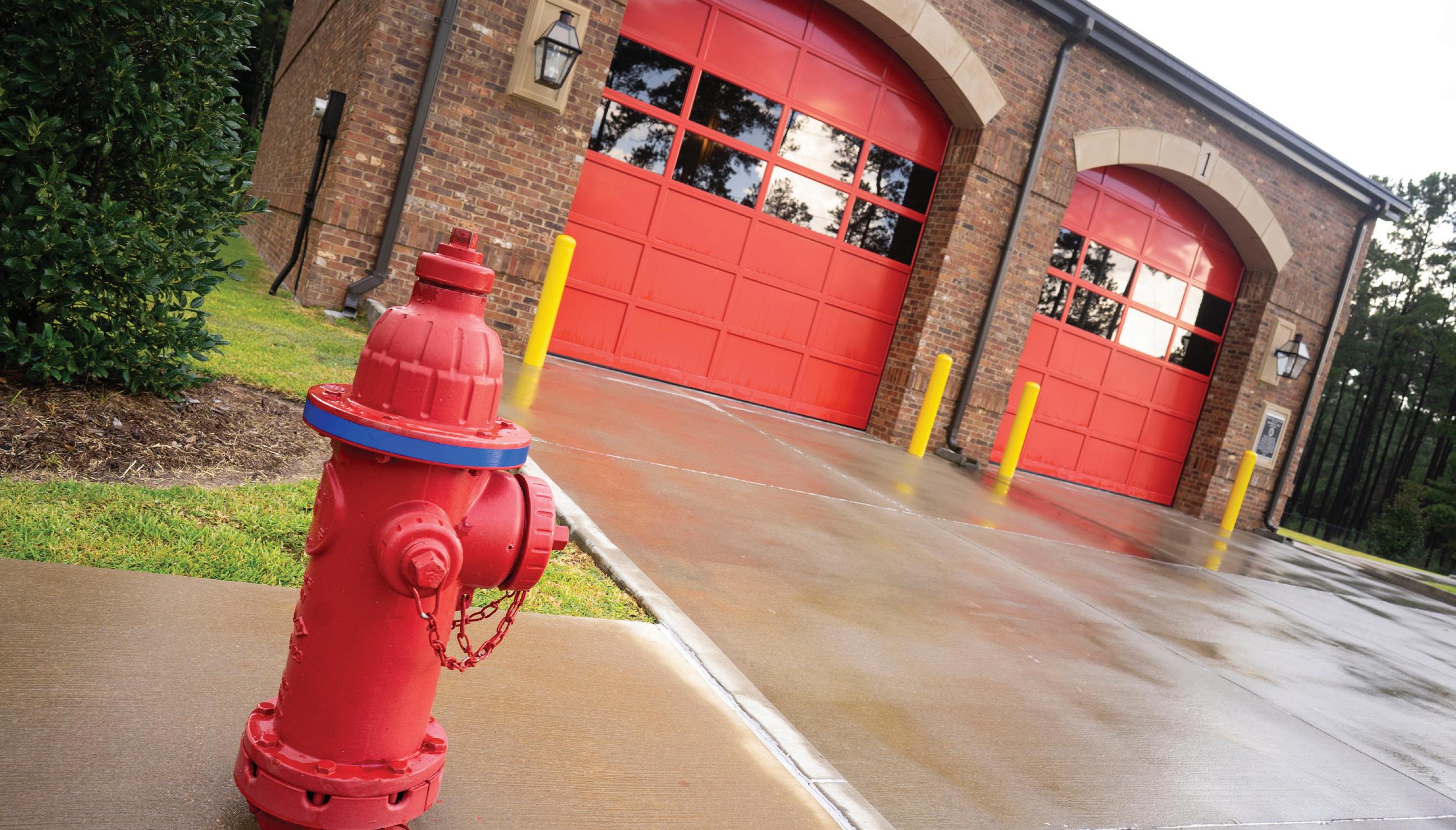
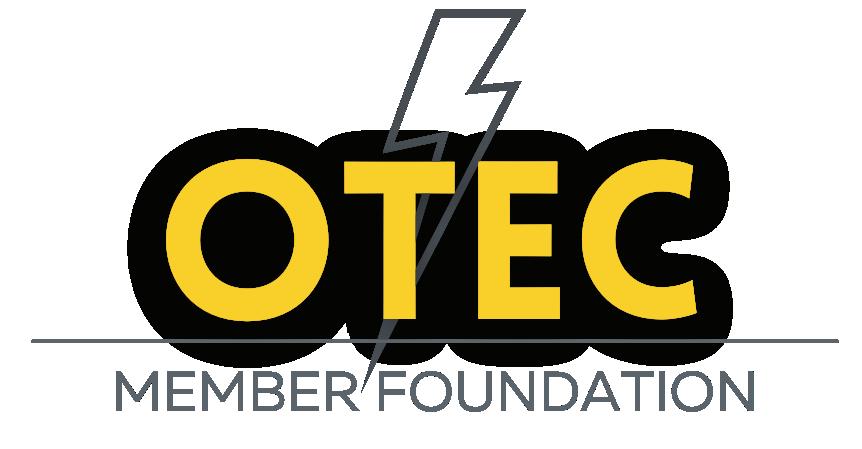

The Member-to-Member Program is the OTEC Member Foundation’s voluntary donation program. It is a great way for Oregon Trail Electric Cooperative members to help support emergency relief efforts in Baker, Grant, Harney and Union counties.
The collected monetary donations are used to support local emergency relief needs and programs—including making direct donations to each of the rural fire departments in OTEC territory.
There are two easy ways to donate:
• Member-to-Member Bill Round Up. With this option, OTEC rounds up the electric bills of participating members to the
nearest dollar, with a 99-cent maximum monthly donation.
For example, if you choose to participate, and your bill is $60.15, OTEC rounds up your payment to $61. The extra 85 cents are pooled with other members’ Round Up donations to make a big impact.
• Member-to-Member Project Share. With this option, you choose to add a one-time, fixed donation amount. There is no minimum or maximum.
Enrolling is simple, and you can end your enrollment at any time. To sign up, call 541-523-3616, stop by any OTEC office or select “Round Up” on your “My Account” login at otec.coop. n
















By Dianna Troyer
An Oregon Vietnam War veteran with enduring survivor’s guilt refused to visit The Wall That Heals when it came to his town several years ago.
The traveling three-quarter scale replica of the Vietnam Veterans Memorial in Washington, D.C., is in its 30th year of touring the nation.
While fighting in Vietnam, the veteran came down with appendicitis. When he was sent to a hospital for treatment, a friend took his place on patrol. He later learned their platoon had been attacked. He never heard from his friend again and assumed he had been killed.
In the confusion of the platoon being transferred, he ended up with his friend’s dog tags. He carried them for decades to honor his friend’s memory.

“His wife told us what happened when she came with the dog tags to find the name on the wall,” says Cathy Miller, program manager/site manager for The Wall That Heals.
“We couldn’t find the name on the wall,” Cathy says. “We did some research and found he never died during the war. He was an engineer with three kids and five grandchildren and died in 2015. After her husband learned about his friend’s fate, he came the next day. He was finally healed after five decades of survivor’s guilt.”
‘Wall Magic’
Cathy has seen countless examples of healing as the wall travels the nation from March to November honoring the 58,281 men and women who died during the war. Three million Americans served in the Vietnam War.
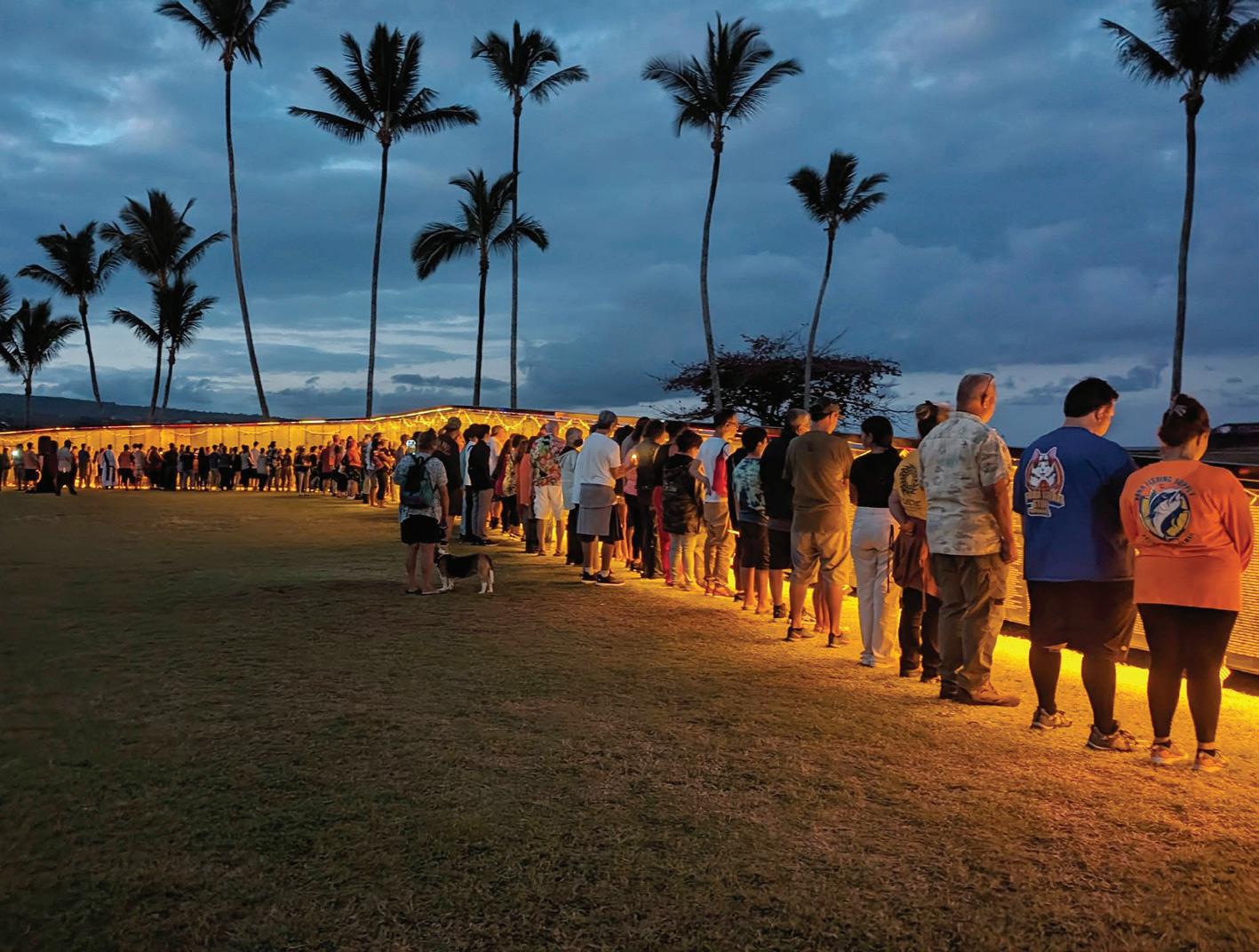
“We call those healing moments ‘wall magic,’” she says. “We see things happen that never would have happened if the wall hadn’t come. A weight is lifted, and people’s expressions change as they cry and release emotion and pain.”
The nonprofit Vietnam Veterans Memorial Fund created the mobile replica for those who cannot travel to the memorial wall in Washington, D.C. Two staff members from the memorial fund are at each host site. The replica was dedicated and displayed for the first time on Veterans Day in 1996.
Since then, the 375-foot-long wall has traveled to 800 communities where millions of people have toured it. In each location, the wall can be viewed for free for three days. An accompanying mobile education center with videos and memorabilia personalizes the roles of Americans in the
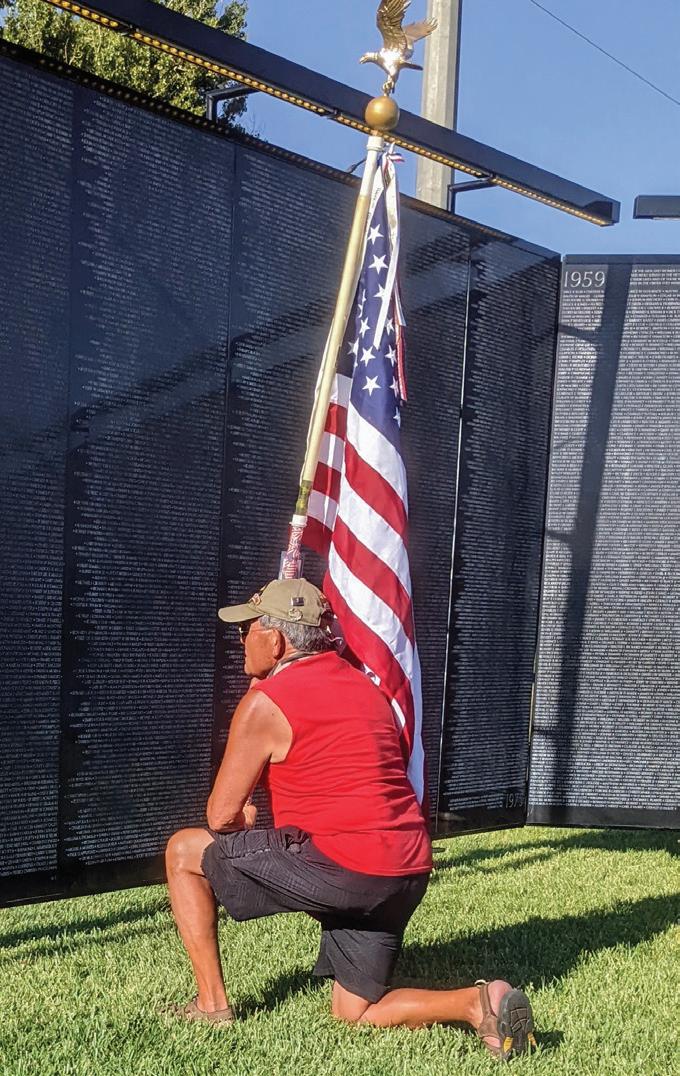

war starting in 1950 when the United States had an advisory role.
“I’m blessed to be part of this, to do what I love, to create a safe place for people to heal,” Cathy says. “I meet the most wonderful people, Gold Star families honoring their loved ones, the volunteers who set it up and take it down, and truckers who donate their time to drive around the 53-foot-long trailer carrying it.”
Every year, only about 30 sites are selected from roughly 140 applicants to host The Wall That Heals. To be chosen, a community must provide 35 to 40 physically fit volunteers to erect and dismantle the wall, and have an adequate location and a short program about the wall.
Among the towns selected in the Northwest are Ellensburg, Washington, and Independence, Oregon.
Ellensburg, Washington, Sept. 4-7 at Rotary Park
While on a weeklong family vacation in Washington, D.C., Ellensburg resident Henry Johnston recalls how the Vietnam Veterans Memorial affected his two teenage sons.
“It’s a somber experience with the volume of names listed,” says Henry, a mortician in the Central Washington town of 19,000. “With the way it’s laid out, you feel a personalized impact of the war.”
Upon learning about the traveling wall, Henry says he knew it needed to come to his town.
“I notice, too, with my business that we’re burying more Vietnam vets,” he says.
He and Russell Colmore, a veteran, are members of the Downtown Ellensburg Rotary Club and organized Kittitas County’s other three clubs to host the wall. Henry, 39, says he became aware of the war due to his high school computer science teacher, who served in Vietnam with his three brothers.
Russell served in the Air Force from 1974-78. During the war, he was assigned to a refueling station in the Azores near Portugal.
Independence, Oregon, Sept. 18-21 at Sports Park
For several years, Vietnam veteran Billy Whisenant envisioned the traveling wall coming to Independence, a town of 10,000 in Western Oregon.
“It’s a perfect place, considering Independence is the first town to have a

permanent Vietnam Veterans Memorial,” says Billy, cochairman of the host committee and commander of American Legion Post No. 33.
Dedicated in1982, the memorial at Main and Center streets was built by three Vietnam War veterans and is the oldest Vietnam War memorial west of the Mississippi River.
“Our local memorial has a dedication plaque set in stone,” Billy says.
A motorcycle escort is being planned to kick off the event Sept. 16.
“I’m grateful for all our dedicated community members coming together to make this successful for all who come,” Billy says.
Billy, a combat Marine Corps veteran who served from 1967-68, recalls being with a young man on the day he died in the war.
“It was emotional to find his name on the wall and have a good cry,” he says. “The wall is a place where people can feel free to talk to each other. It’s an opportunity to educate people of all ages about the war and its impact.”
The Wall That Heals’ schedule is at thewallthatheals.org. At each location, the wall opens at 9 a.m. on the first day, is open around the clock, and closes at 2 p.m. on the final day.

The Wall That Heals requires approximately 35 to 40 volunteers and takes six to 10 hours to set up.
More than 160 metal stakes are pounded into the ground to secure the metal framework that holds 140 panels bearing the names of American servicemembers who died in the war from 1959-75. The panels increase in height, with the tallest at 7.5 feet weighing about 80 pounds. Made of a synthetic granite, each panel is sanded and polished during the winter offseason.
Listed by date of casualty, names include 43 sets of brothers, three sets of fathers and sons, 16 chaplains and eight women who were nurses. Those listed range in age from 15 to 62.
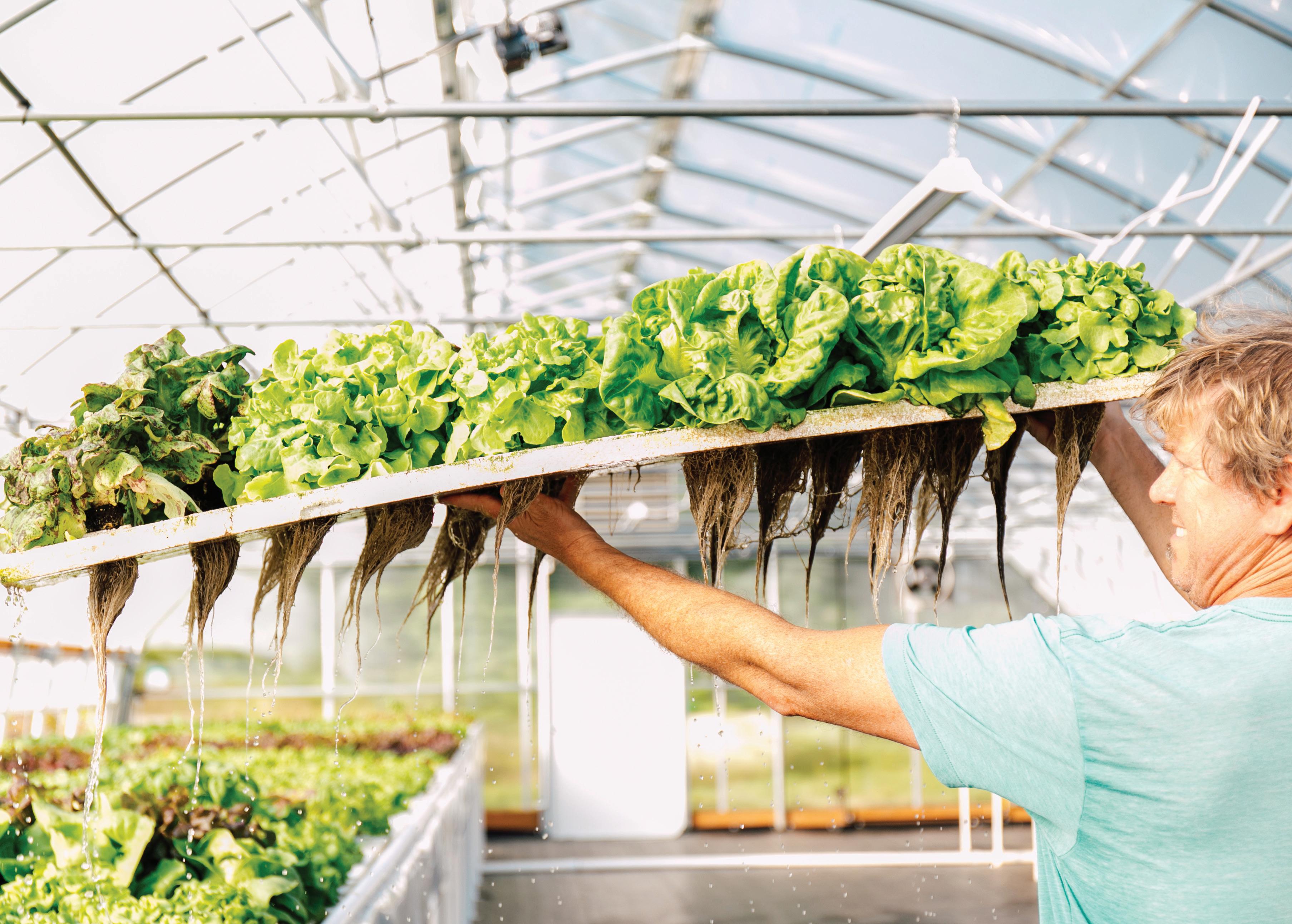
By Ginger Meurer

While the Pacific Northwest is home to many traditional farms scattered across the countryside, some entrepreneurs are finding new paths to planting, using hydroponic technology—which relies on nutrient-rich water solutions instead of soil—to grow food year-round in greenhouses and even warehouses.
A few are taking the process a step further with aquaponic systems that raise greens and fish in a shared system that mimics natural streams.
Operations Manager Emily Blessington leads the team of eight at Farmbox Greens, Seattle’s first indoor vertical produce farm.
Dan Albert founded Farmbox in 2012 with his wife, Lindsay Sidlauskas, in their home garage.
“They just grew it from the ground up,” Emily says. “They went to farmers markets and cold-called chefs to get their product into the hands that they wanted. It was definitely a labor of love.”
In 2016, The New York Times wrote about Farmbox. Charlie Billow, of produce wholesaler Charlie’s Produce, saw the article, bought the company and helped it
expand into a warehouse space in the SoDo neighborhood of Seattle, where it still operates today.
Dan moved on to other pursuits in 2020, but not before he trained Emily as an entry-level employee seven years ago. When she graduated from Western Washington University with a degree in environmental policy, Emily wasn’t sure what she wanted to do. So, she and a college friend went to work as WWOOFers. World Wide Opportunities on Organic Farms matches volunteers interested in learning the trade with farmers all over the world willing to provide education, room and board in exchange for labor. Emily worked her way around traditional farms for about six months.
“I realized this is incredible,” she says. “This is what I want to do with my life.”
She returned home to Seattle, found Farmbox and got a job at the bottom rung. She knew nothing about hydroponic farming, but Dan was understanding and willing to show her the ropes. Emily swiftly worked her way up to lead and finally operations manager.
“If you have a passion for plants, and if you’re willing to learn, then you can learn anything," she says. "I’m a real testament to that. I did not come from any sort of farming background. It’s all possible.”
Much like Emily, the seeds at Farmbox reach their full potential swiftly. Time and density are tighter in hydroponics. Instead of spacing plants and giving them time to grow, seeds are planted densely and harvested quickly. After a few days of germinating in the dark, the plants get water, nutrients and a daily 17-hour dose of LED light that mimics sunlight. Fastest from seed to harvest are the radish mix and the pea shoots, which are ready to sell in only seven days. The longest to market are the basil and red sorrel, which can take anywhere from 21 to 23 days.
Emily loves the smells at Farmbox, especially when harvesting fragrant herbs like basil or cilantro. Unlike traditional farmers, her team members rarely gets their hands dirty.
“If you were to see us harvesting, we’d have hairnets on, and we’d be wearing gloves and smocks. It feels very much like lab meets farm. We wear gloves at all steps during production just to be sure we’re as food-safe as possible,” she says.
Every facet of the growth process—pH, nutrients, light—is controlled. But sometimes challenges must be weathered and whole cycles of crops must be discarded, like the time the power went out for a few days.
“It was a bit of a struggle, but we just bounced back, and we’re off to the races,” Emily says. “A real system issue can affect things for a month, but we try to bounce back as quick as we can.”
Emily is certain robots won’t be doing her job anytime soon.
“We can really put our eyes on each tray, and that’s pretty special,” she says. “Maybe a robot could do that, but I think that we care so deeply, and I just don’t think a robot could.”
Mykl Nelson, who taught urban agriculture at Oregon State University from 2020-2025, says he sees a potential for growth in hydroponics as acreage becomes harder to come by, especially for young first-generation farmers who don’t own land and are looking to break into the industry.

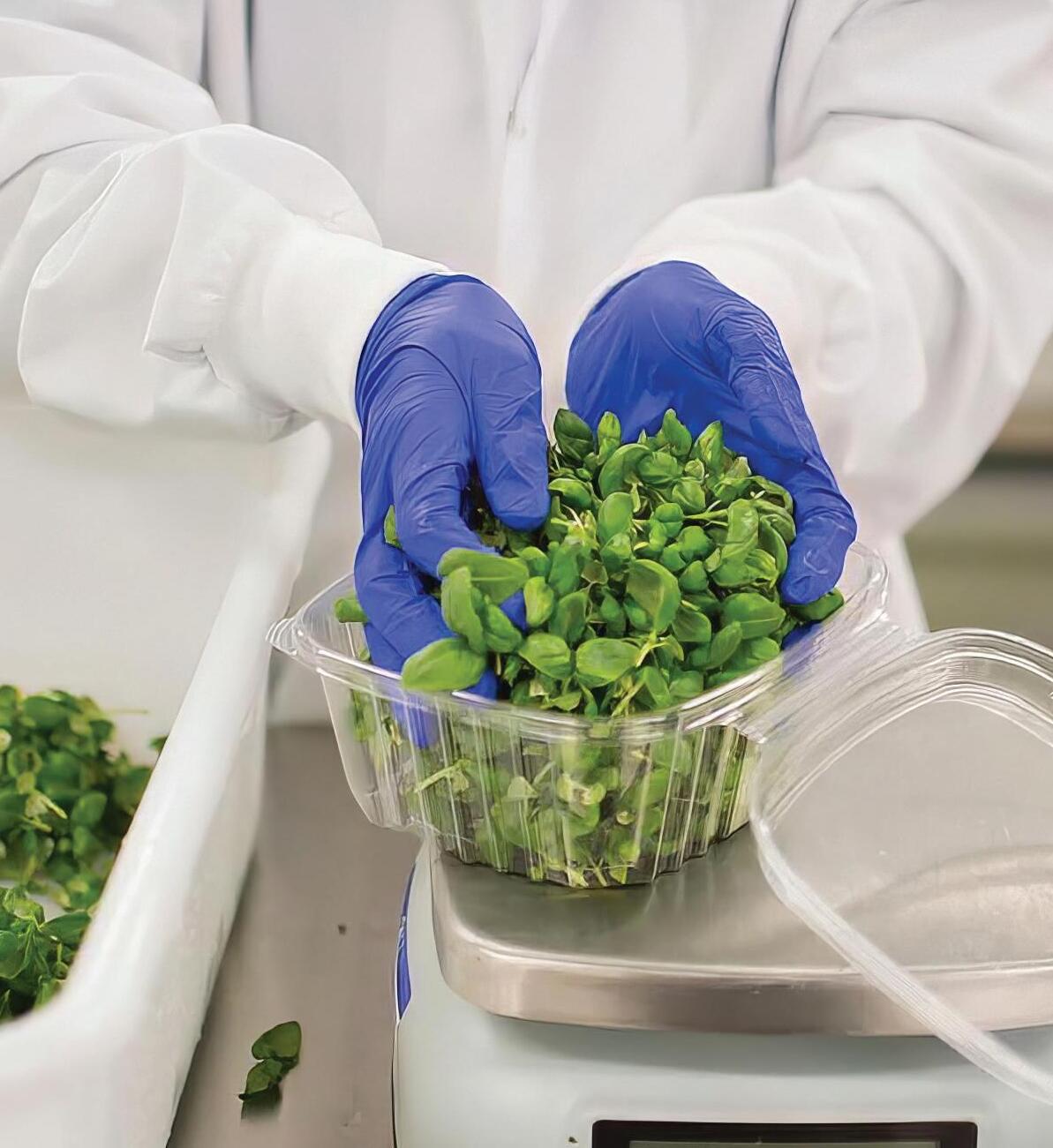


“If you’re growing on 5 acres on the edge of town and the person you’ve been renting from decides to sell it, and you’ve got to get out, you’re not taking that soil with you,” Mykl says. “All the work that small, organic farmers do to their soil, it’s just gone. All the tending to microbial life and the soil tills and soil aggregation and trying to change texture and trying to improve organic matter, all of that is gone. And you just have to walk away.”
But hydroponic farmers growing in vertically stacked systems in a warehouse, Mykl says, can take advantage of their systems’ modularity and pack up the operation and set up shop elsewhere, if necessary.
“It would still be a pain,” he says. “You’d still have to shut down production. So, there’d be a length of time when you wouldn’t have fresh product. It would be annoying, something to be avoided, but it would be possible.”
Mykl says another benefit of hydroponics is the ability to be nimble. While conventional farmers must slowly improve soil to get it where they want it, adjusting conditions in a hydroponic system is instant.
“If you want the pH lower—boom, it’s lower,” he says.
Best of all, Mykl says, is it happens without pesticides, chemicals or even dirt. He adds that real research is going into designer produce.
He sees farmers focused on “growing not just a good lettuce, but the best head of lettuce and being able to manipulate how crisp it is and how many antioxidants are in there and how many nitrates are in there,” he says.
Brian Rusk, known to most as Farmer Brian or the Basil Guy, raises fish and leafy greens in a symbiotic system in Bellingham, Washington. The fish excrete waste full of nutrients the plants need to grow. Then the plants clean the water, and the system sends it back to the fish.
“As long as they’re in balance, they can continuously work together,” Brian says.
While many aquaponic farmers prefer raising seafood like tilapia, Brian says he prefers raising koi, and he doesn’t have to kill them.
“Mostly I just name them and pet them and talk with them and keep them well,” he says.
Brian grew up in suburban Richmond, Virginia. After earning his doctorate in geology, he worked as a university professor. About 10 years ago, Brian started FarmWild as a side gig, raising chickens for eggs and turkeys for Thanksgiving. In 2017, he added aquaponics.
Out of all the things he did on the farm, Brian found aquaponics the most captivating. When he realized he was delegating the other work to employees, he decided last year to
TOP LEFT:

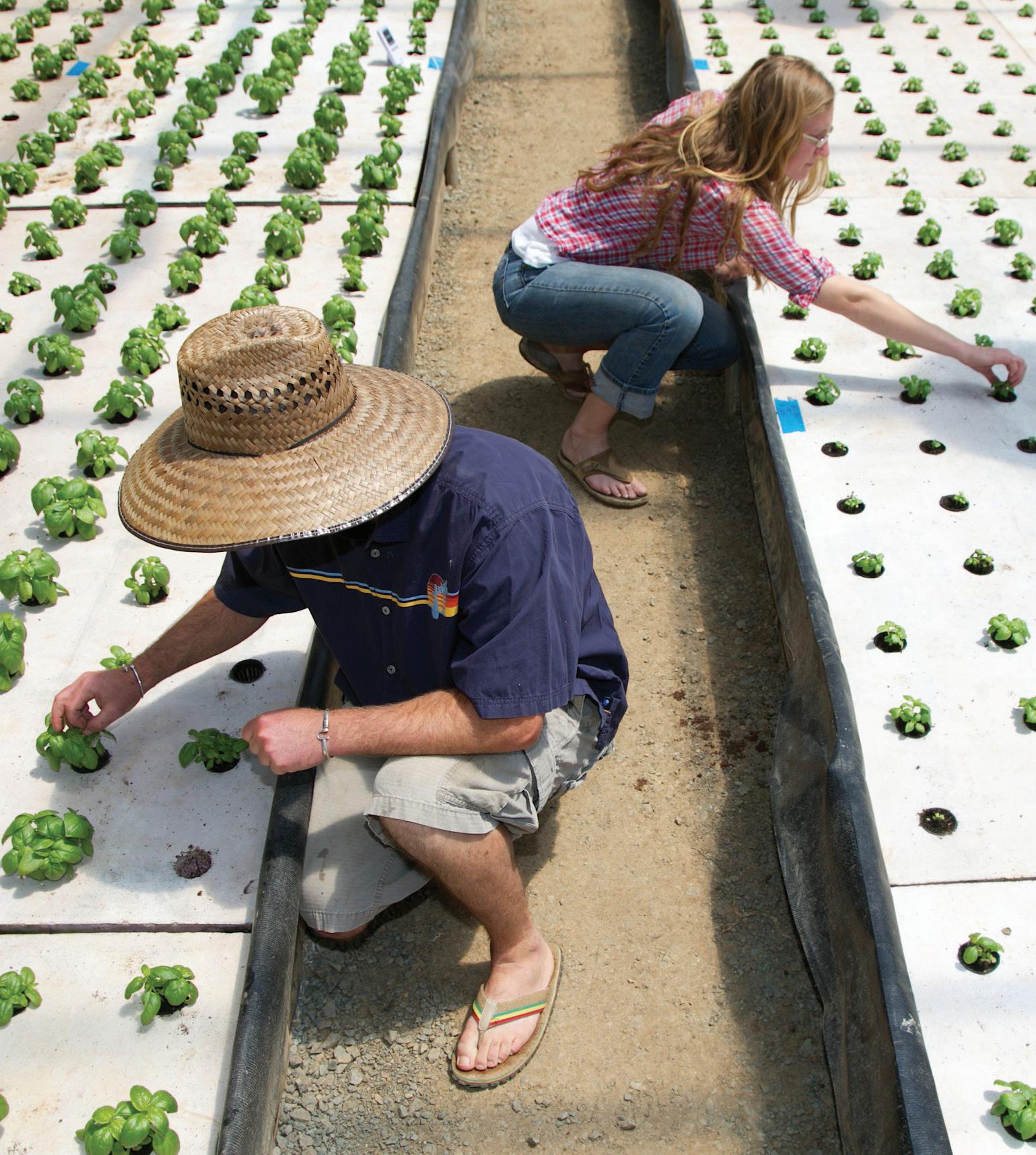
give up the fowl and focus his full attention on fish and greens. He almost regretted it when his buddies were bringing in $12 a carton for eggs.
Brian eased away from university life, too, first working fewer hours, then half-time before stepping away altogether five years ago. Along with the switch to aquaponics came a change of venue. Instead of working out of greenhouses on the farm, Brian works in downtown Bellingham in a warehouse less than a mile from many of his biggest customers.
That proximity means FarmWild greens couldn’t be fresher. Brian pulls the basil from the water with the roots still intact, boxes it up and drives it to his nearby restaurant customers.
“It’s still growing in the box and can stay alive for weeks so they can harvest it in their own kitchen,” he says.
From Ponds to Aquaponics
As a kid in California, Michael Hasey had a clubhouse with walls lined with aquariums.
“Anything I could catch went into an aquarium where I would study it and then let it go,” he says.
Michael learned farming by helping at surrounding ranches near his childhood home in Livermore. He racked up skills as he went, learning about landscaping, construction and pond development. He’s particularly proud of work he did maintaining water features for places like Mission Bay Golf Course, Balboa Park and San Diego Zoo.
As he worked on ponds, Michael perfected methods of breeding fish using vegetative filtration. He wrote an article about it for POND Trade Magazine, and a university professor in the Virgin Islands reached out.
The professor said the university was studying similar things but using it for food crops—calling it aquaponics—and invited Michael to visit. It just so happened that Michael's brother was working as a chef near the university.
“So, I had a place to stay,” Michael says. “I hopped on a plane, and there I was studying under Dr. James Rakocy.”
His new mentor was one of the fathers of aquaponics.
From there, Michael made his dream a reality. He sold his pond business and bought land and water rights in Southern Oregon. For five years, he and his wife, Olivia, with the help of a partner, interns and WWOOFers, built and ran a successful farm in the Rogue Valley.
Rogue Aquaponics had six tanks, each larger than 1,000 gallons. The company was raising 1,400 to 1,600 pounds of fish a month. Meanwhile, Olivia was developing the plant side, working on recipes for pesto, which they processed in an on-site commercialgrade facility and sold through distributors and at farmers markets under the name Super Simple Foods. Michael was also sought after as a consultant by others hoping to start aquaponic systems of their own.
That’s when the area was hit by a huge storm. Add to that the COVID-19 pandemic and the birth of Michael and Olivia’s second child, and it was all just too much. The couple decided to pause
production for a while so Michael could focus on consulting. Five years later, they have no intention of giving up on aquaponics, but they are planning to pursue it in a new place. As soon as their Oregon farm sells, the couple plans to head to Kona, Hawaii, which Michael says is a big hub for aquaponics.
“They’re pioneers in this industry and have been for a long time,” he says.
Olivia is excited about the future, too.
“I’m over the moon,” she says. “We’re just really champing at the bit to get to all these new ways we can see ourselves applying all the things we’ve learned here.” n


FarmWild, an aquaponic farm in downtown Bellingham, is among 15 stops on this year’s Whatcom County Farm Tour.
The tour, sponsored by the nonprofit Sustainable Connections, welcomes the public to visit “a good mix of farms,” says organizer Jessica Gillis. That includes “folks that grow vegetables, fruit, or flowers, those that raise animals, and some that use hydroponic or regenerative practices," she says.
Last year, the tour drew more than 1,750 participants to the free one-day event. This year, FarmWild has a change of venue. Last year, the business was still out in the country, and 300 to 400 people made the trek to see pigs and chickens. Founder Brian Rusk suspects being in downtown Bellingham, in a more accessible venue, will result in a bigger draw this time around.
“Most people have never seen this kind of thing, and there’s a lot of curiosity around it,” he says.
Other farms slated to participate include: Alluvial Farms, Bellingham Flower Farm, CTK Food Share and Farm, Fair Cow’s Path Farm, Five Elements Harvest, Grace Harbor with Steensma Creamery, Growing Veterans, Lagom Vineyards, Oak Meadows Farm, Primavera Farm, Small Acres, Sonder Farmstead, Widnor Farms and Wright Brothers Farms. Visit sustainableconnections.org/whatcom-county-farm-tour for more information about the tour.
Classic Caprese Pasta Salad
Pasta salad
1 pound of your favorite shaped pasta, cooked and cooled
3 cups grape tomatoes, halved
12 ounces fresh mozzarella cheese balls, plain or marinated, halved
Dressing
½ cup extra-virgin olive oil
4 tablespoons red wine vinegar
1 garlic clove, minced

1/3 cup basil, chiffonade
¼ cup parsley, chopped
1/8 cup freshly grated ParmigianoReggiano cheese
Balsamic glaze, for drizzling
Salt Pepper
In a bowl, combine pasta, tomatoes, cheeses and herbs. In a glass measuring cup, whisk dressing ingredients. Season to taste. Pour dressing over pasta salad, and toss to combine. It’s best if it’s chilled for an hour. Garnish with more basil. Drizzle with balsamic glaze just before serving.
½ cup mayonnaise
½ cup scallions, chopped
½ cup chopped fresh basil, packed
1/8 cup freshly squeezed
lemon juice
1 clove garlic, chopped
1 teaspoon kosher salt
½ teaspoon freshly ground black pepper
1 teaspoon anchovy paste
½ cup sour cream
Place all ingredients except for sour cream in a blender or food processor. Blend until smooth. Add sour cream and process until blended.
Keep refrigerated until serving on your favorite salad.
½ cup toasted pine nuts
2 tablespoons fresh lemon juice
1 garlic clove
¼ teaspoon sea salt
Freshly ground black pepper
2 cups basil, leaves only
¼ cup extra-virgin olive oil, plus more for a smoother pesto
¼ cup freshly grated Parmesan cheese
In a food processor, combine the pine nuts, lemon juice, garlic, salt and pepper. Pulse until well chopped. Add the basil. Pulse until combined.
With the food processor running, drizzle in the olive oil. Pulse until combined. Add the Parmesan cheese, and pulse to briefly combine. Add more olive oil if desired.
Vinaigrette
1 shallot, roughly chopped
2 cups tightly packed fresh basil leaves, stems removed (about 4 ounces)
1 clove garlic
Pasta
1 pound pasta
2 tablespoons olive oil
2 cloves garlic
2 shallots, thinly sliced
½ teaspoon red pepper flakes
½ teaspoons red pepper flakes
½ cup olive oil
2 tablespoons red wine vinegar
1 teaspoon salt
1 zucchini, cut into coins
Kosher salt
Freshly cracked black pepper
1 lemon, juiced
Fresh basil
Parmesan cheese
To make the vinaigrette, combine all ingredients in a highpowered blender. Blend for 60 seconds until smooth. Taste and adjust salt and pepper as needed.
Cook the pasta according to the package directions until al dente. Drain and set aside.
In a large skillet, heat the olive oil over medium heat. Add the garlic, shallot and red pepper flakes. Saute until fragrant. Add the zucchini, and saute until just soft. Add the pasta and ½ cup of basil vinaigrette. Toss to combine. Add more basil vinaigrette as needed. Season with salt, pepper and lemon juice before serving.
2 extra-large egg yolks, at room temperature
3 tablespoons freshly squeezed lemon juice
½ cup freshly grated Parmesan cheese
1 tablespoon Dijon mustard
½ cup chopped fresh basil leaves, lightly packed
1 teaspoon minced garlic
1 tablespoon kosher salt
1 teaspoon freshly ground black pepper
1 cup vegetable oil, at room temperature
½ cup quality olive oil, at room temperature
Place the egg yolks, lemon juice, Parmesan, mustard, basil, garlic, salt and pepper in a food processor fitted with the steel blade. Process for 30 seconds until smooth.
Combine the vegetable oil and olive oil in a liquid measuring cup. With the processor running, slowly pour the oil mixture through the feed tube to make a thick emulsion.
Store in the refrigerator until ready to use; it will keep for up to a week. Serve with beef tenderloin or steak.
Baguette bread, preferably stale, cut into 1-inch cubes (about 3 cups)
6 tablespoons extra-virgin olive oil, divided
1 teaspoon kosher sea salt, divided
2 pounds ripe tomatoes, any variety or color
8 ounces fresh mozzarella, torn into bite-size pieces
½ cup thinly sliced red onion
2 garlic cloves, grated to a paste
2 tablespoons red wine vinegar, divided
1 teaspoon dried oregano
Large pinch red pepper flakes
½ teaspoon Dijon mustard
Black pepper
1 cup sliced English cucumber
½ cup torn basil leaves
¼ cup flat-leaf parsley leaves, roughly chopped
Heat oven to 425 F. Spread the bread cubes on a baking sheet, and toss with 2 tablespoons oil and a pinch of salt. Bake until dried out and golden brown at the edges, about 10 minutes. Let cool.
Cut tomatoes into bite-size pieces, and transfer to a large bowl. Add mozzarella, onions, garlic paste, 1 tablespoon vinegar, oregano, 1/4 teaspoon salt and red pepper flakes. Toss to coat, then set aside.
In a medium bowl, combine remaining 1 tablespoon vinegar, mustard, 1/4 teaspoon salt and black pepper to taste. While whisking constantly, slowly drizzle in the remaining 4 tablespoons of olive oil until the mixture is thickened. Stir in cucumbers, basil and parsley.
Add bread cubes and cucumbers to the tomatoes. Toss well. Let sit for at least 30 minutes and up to 4 hours before serving. Toss with a little more olive oil, vinegar and salt if needed just before serving.
We are gathering items for this year’s Operation Christmas Child. If you sew, knit or crochet, we would love to have new or like new Barbie dolls, Barbie clothes, children’s knitted/crocheted hats or finger puppets. We are also collecting Matchbox or Hot Wheels cars, cloth pencil pouches and Beanie Babies. With your help, last year we sent 712 shoeboxes worldwide. Our goal is to send as many or more this year. Many thanks to those who have sent items in the past, you’ve shared joy with children, many of whom had never received a gift of this nature. If you have other ideas for children 3-14, let us know. Sometimes items are too large for the shoeboxes. We cannot send liquids or sweets. Thank you.
Peggy Hodge 10106 Edgewood Drive Anderson Island, WA 98303 Peggyocc2000@gmail.com
I am looking for all types of sewing materials to use and pass out around the villages. Reason being, we have a memorial potlatch in March 2026. People are already sewing for this event. They are sewing to contribute in many villages around Nulato, Fairbanks and Anchorage, Alaska. Even some down in the lower states. All sewing items are appreciated. Maaseé (thank you in our language, Lower Koyukon Athabascan, Nulato, Interior Alaska).
Eileen Stickman
P.O. Box 65082 Nulato, AK 99765
My sister and I are making jewelry. Please send any unwanted chains, beads or jewelry. Thank you.
Marsha Holeik and Susan Bybee 16637 W.M. Foss Road La Pine, OR 97739
My mother turns 95 years old in late August and would be elated to receive birthday greetings from everywhere. She was married for 67 years, raised seven daughters and had a successful career in real estate. She currently volunteers in the library at her retirement home and is going strong. Please send cards to Shirley Smith, 1950 NE 102nd Ave., Room 265, Hillsboro, OR 97006. Thanks.
Cheryl K. Smith Cheshire, Oregon
My mother turns 97 in early August. Originally from Mill City, Oregon, she moved to Longview, Washington, with her father and siblings after the death of her mother. She was married for 50 years until her husband’s death, and she is one of those people who has never met a stranger. She makes it a point to visit the mailbox at her apartment, so please help us fill it with birthday wishes. Freda Everdell, 1767 20th Ave., Apt. 613, Longview, WA 98632.
Paula Everdell Graham, Washington
My mother celebrates her 90th birthday in August. She is very active, playing bunco, musical bingo and card games with her friends. She and my dad have been married 73 years. She loves growing beautiful flowers. She would be surprised to receive cards on this milestone birthday. Please send to Ava Greenwood, 11006 E. Santan Blvd., Sun Lakes, AZ 85248. Thank you.
JoAnn Pruett Sagle, Idaho
I am looking for a Cadillac hubcap (just one) for a community art project. Year and condition doesn’t matter. Thank you.
L. M. Fenton 43712 37th Ave. E. Eatonville, WA 98328
lmfenton@outlook.com
Readers are amazing. My mom, Jo, received more than 300 beautiful cards for her 93rd birthday, including puzzle books, funny anecdotes, lovely sentiments and, importantly, prayers. She was delighted. Thank you.
Karen Walton Richland, Washington
I want to thank the person who sent me the lovely book for beaded jewelry.
Betty Mercado
The Dalles, Oregon
Send your request (no attachments) to readerexchange@ruralite.org or mail to Reader Exchange, 5625 NE Elam Young Parkway, Suite 100, Hillsboro, OR 97124. Fill in the subject line with Reader Exchange.
Acceptance, scheduling and editing are at the editor’s discretion. Single requests only. No duplicates. If replying to a reader submission, please only send what is requested. Submissions are handled first-come, first-served as space allows. We cannot honor every request. Please affirm you have authorization from all appropriate parties before submitting. By submitting, you indemnify Reader Exchange, Pioneer Utility Resources Inc., its officers, directors, employees, utility clients and insurers from all legal liability incurred by the publication of information. We no longer accept pen pal requests. You may submit a pen pal request as a Marketplace ad (pricing applies). When submitting a milestone request, please send it at least two months before the milestone. Phone numbers are not published. Email addresses are if they are part of the ad, but you must include a postal address.
Requests must include the name and address of the electric utility that provides your magazine.
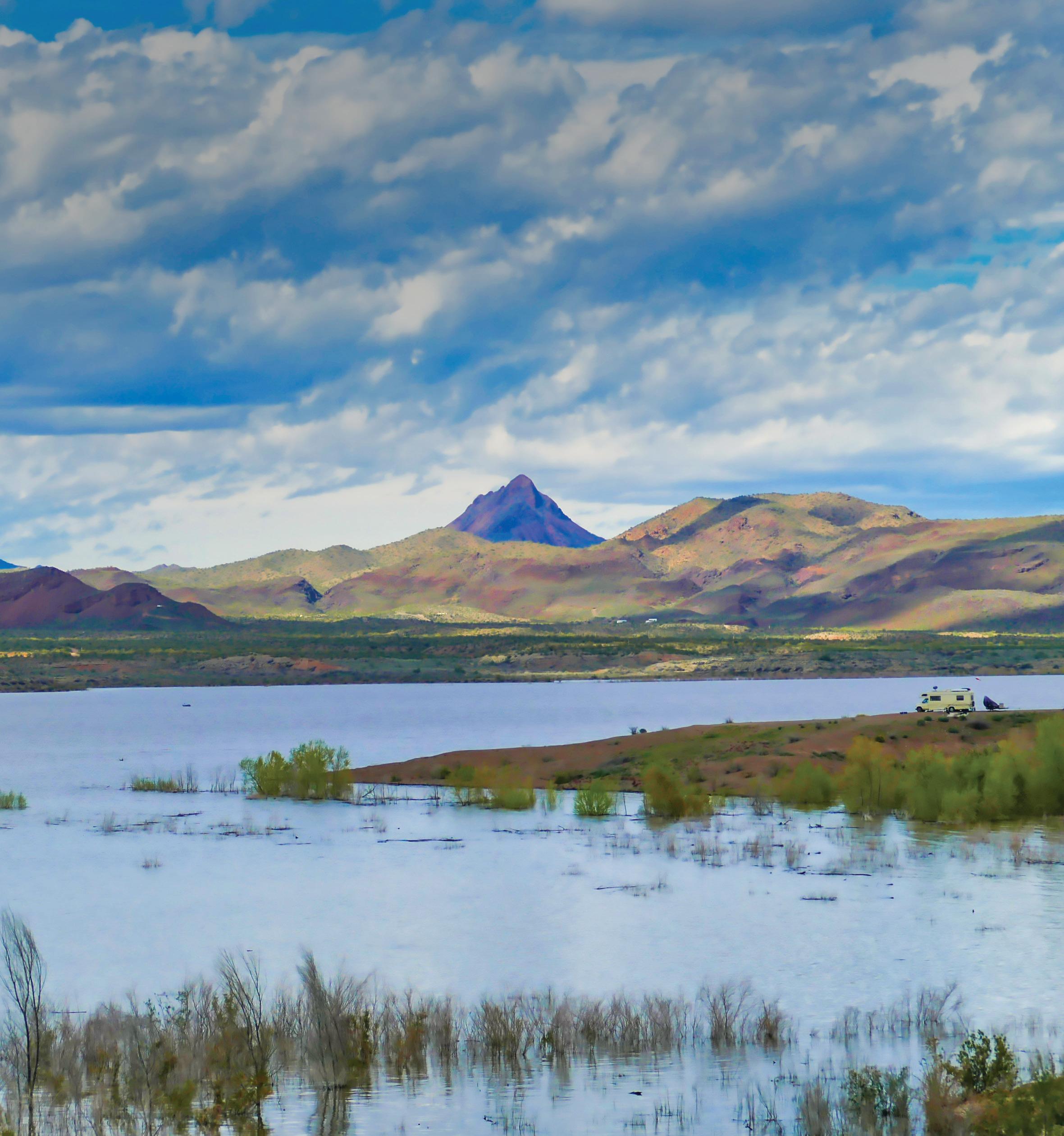
Head to Western Arizona for clear water surrounded by low mountains at Alamo Lake State Park. Known for its bass fishing, exploring the park is a great way to experience the Sonoran desert and see wildlife, such as eagles, pelicans and Great Blue Herons.
Alamo Lake sits on the Bill Williams River behind Alamo Dam. While the dam was being built in the 1960s, the Army Corps of Engineers, Arizona State Parks and Arizona Game and Fish worked to determine the operation and management of Alamo Lake. It became a state park in November 1969—just months after the dam was completed—and the Army Corps of Engineers built a campground, picnic area and boat ramp.
Alamo Lake is 3,500 acres and known for three types of fish. The most notable is largemouth bass, which can be caught year-round, and the lake is home to frequent bass fishing tournaments. The lake is also a great spot to catch crappie and tilapia. Fishers older than 10 must have a valid Arizona fishing license.
There’s lots to do around Alamo Lake State Park. Head northeast, and within four hours you will pass Prescott National Forest, known for its mountains and waters, on your way to the red rock buttes of Sedona. Head west from Alamo Lake, and it is about three hours to Joshua Tree National Park.
More Information
Alamo Lake State Park has a $10 entrance fee for a person in their own vehicle, or $20 for a vehicle with up to four people. To start planning your trip, visit tinyurl.com/a82rz9zr.
People don’t always do what their doctor says, but when seasoned veteran emergency room physician, Dr. Philip B. Howren, says every senior should have a medical alert device, you better listen up.
“Seniors are just one fall away from being put in a nursing home,” Dr. Howren said. “With a medical alert device, seniors are never alone. So it keeps them living independently in their own home. That’s why seniors and their family members are snapping up a sleek new medical alert device that comes with no monthly bills ever,” he said.
Many seniors refuse to wear old style help buttons because they make them look old. But even worse, those medical alert systems come with
To solve these problems Universal Physicians, a U.S. company went to work to develop a new, modern, state-of-the-art medical alert device. It’s called “FastHelp™” and it instantly connects you to free unlimited nationwide help everywhere cell service is available with no contracts, no deposits and no monthly bills ever.
“This slick new little device is designed to look like the pagers doctors wear every day. Seniors love them because it actually makes them look important, not old,” Dr. Howren said.
FastHelp is expected to hit store shelves later this year. But special newspaper promotional giveaways are slated for seniors in select areas. ■
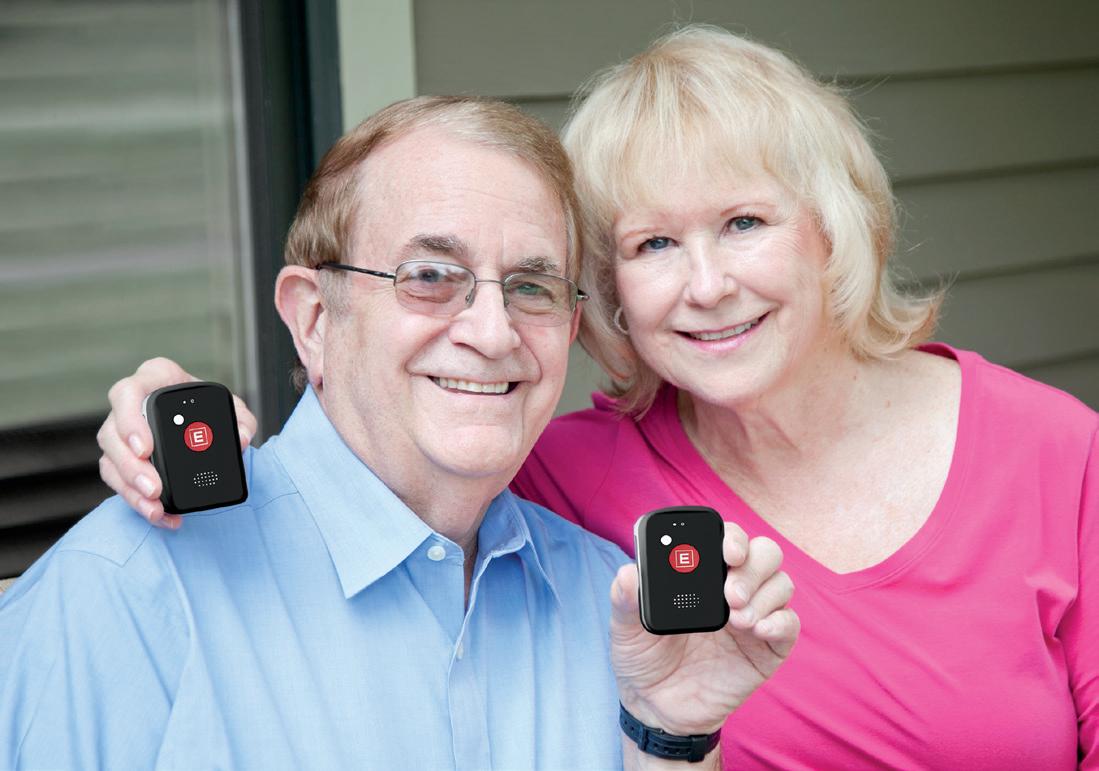
■ NO MONTHLY BILLS: “My wife had an old style help button that came with hefty bills every month and she was embarrassed to wear it because it made her look old,” said Frank McDonald, Canton, Ohio. “Now, we both have FastHelp™, the sleek new medical alert device that our grandkids say makes us look ‘cool’ not old,” he said. With FastHelp, seniors never have to worry about being alone and the best part is there are no monthly bills ever.
contracts,
nationwide help with just
The phone lines are ringing off the hook.
That’s because for seniors born before 1961, it’s a deal too good to pass up.
Starting at precisely 8:30am this morning the Pre-Store Release begins for the sleek new medical alert device that comes with the exclusive FastHelp™ One-Touch E 911 Button that instantly connects you to unlimited nationwide help everywhere cell service is available with no contracts, no deposits and no monthly bills ever.
“It’s not like old style monitored help buttons that make you talk to a call center and only work when you’re at home and come with hefty bills every month. FastHelp comes with state-of-the-art cel -
(Continued on next page)

(Continued from previous page)
lular embedded technology. That means it works at home or anywhere, anytime cell service is available whether you’re out watering the garden, driving in a car, at church or even hundreds of miles away on a tour or at a casino. You are never alone. With just a single push of the One-Touch E Button you instantly get connected to free unlimited help nationwide with no monthly bills ever,” said Jack Lawrence, Executive Director of Product Development for U.S. based Universal Physicians.
“We’ve never seen anything like it. Consumers absolutely love the sleek new modern design and most of all, the instant rebate that practically pays for it and no monthly bills ever,” Lawrence said.
FastHelp is the sleek new medical alert device with the best of combinations: a quality, high-tech engineered device that’s also an extremely great value because there are no monthly bills ever.
Better still, it comes with no contracts, no deposits and no monthly bills ever – which makes FastHelp a great choice for seniors, students and professionals because it connects to one of the largest nationwide networks everywhere cell service is available for free.
And here’s the best part. All those who already have an old style monitored medical alert button can immediately eliminate those monthly bills, which is why Universal Physicians is widely advertising this announcement nationwide.
“So if you’ve ever felt a medical alert device was too complicated or expensive, you’ll want to get FastHelp, the sleek new medical alert device with no monthly bills,” said Lawrence.
The medical alert device slugfest was dominated by two main combatants who both offer old style monitored help buttons that come with a hefty bill every month. But now Universal
Physicians, the U.S. based heavyweight, just delivered a knockout blow sending the top rated contenders to the mat with the unveiling of FastHelp. It’s the sleek new cellular embedded medical alert device that cuts out the middleman by instantly connecting you directly to highly trained 911 operators all across the U.S. There’s absolutely nothing to hook-up or install. You don’t need a land line and you don’t
need a cell phone. Everything is done for you.
“FastHelp is a state of the art medical alert device designed to make you look important, not old. Old style monitored help buttons you wear around your neck, or require expensive base station equipment or a landline are the equivalent of a horse and buggy,” Lawrence says. “It’s just outdated.”
Millions of seniors fall every year and spend hours lying on the floor helpless

IF BORN
and all alone with no help.
But seniors who fall and get immediate help are much more likely to avoid getting sent to a nursing home and get to STAY living in their own home independently.
Yet millions of seniors are still risking their safety by not having a medical alert device. That’s because seniors just can’t afford to pay the monthly bills that come with old style medical alert devices.
That’s why seniors born
before 1961 are rush ing to cash in the whopping $150 instant rebate before the 21 day deadline ends.
So there’s no need to wait for FastHelp to hit store shelves later this year because seniors born before 1961 can get it now just by using the $150 instant rebate coupon printed in today’s newspaper before the 21 day deadline ends. If lines are busy keep trying, all calls will be answered. ■
Use the rebate coupon below and call this Toll-Free Hotline: 1-800-330-4294 DEPT.
1961: You cannot use the rebate coupon below and must pay $299 Call: 1-800-330-9423 DEPT. HELP8699
THE BOTTOM LINE: You don’t need to shop around. We’ve done all the leg work, this deal is too good to pass up. FastHelp with the instant rebate is a real steal at just $149 and shipping and there are no monthly bills ever.
PROS: It’s the sleek new medical alert device that comes with the exclusive FastHelp OneTouch E 911 Button that instantly connects you to free unlimited nationwide help everywhere cell service is available with no contracts or deposits. It connects you to the vast available network of cellular towers for free and saves seniors a ton of money because there are no monthly bills ever making this deal irresistible. Plus it’s the only medical alert device that makes seniors look important, not old.
CONS: Consumers can’t get FastHelp in stores until later this year. That’s why it’s so important for seniors born before 1961 to call the National Rebate Center Hotline within the next 21 days. For those who miss that deadline, the sleek little medical alert device will set you back over $300 bucks.








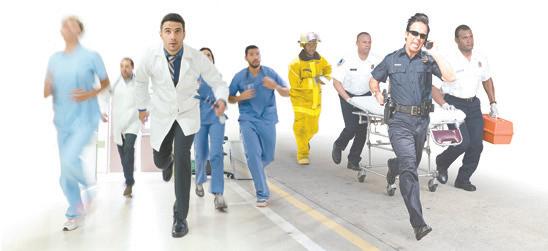
By Dave LaBelle
I have written in past years about the merits of photographing people from the back, but the concept is worth repeating.
Body language—or gesture, as it is often called—can convey much in a still photograph. We can often tell a lot about a person’s disposition just by the way they carry themselves.
Whether overt gestures such as raising a fist in protest or outstretched hands imploring agreement speak loudly, the quieter, subtle gestures—such as the way one walks, or tilts their head when speaking or listening—can also communicate a lot when our eyes pay attention.
If you have never closely studied Rembrandt’s “The Return of the Prodigal Son,” I suggest you give this masterpiece a serious look. Beyond the mood-setting color, the postures of the son, father and brother—especially the positions of the hands—are powerful details employed to tell this compassionate story in one of the artist’s greatest works.
A few years ago, I was walking in the hills with a dear friend, Mark, after he had lost his oldest son. He often took long hikes alone to pray. He asked one day if I would walk with him. I did not carry a camera on this day, but I did have my cellphone.
Following behind on the narrow path,
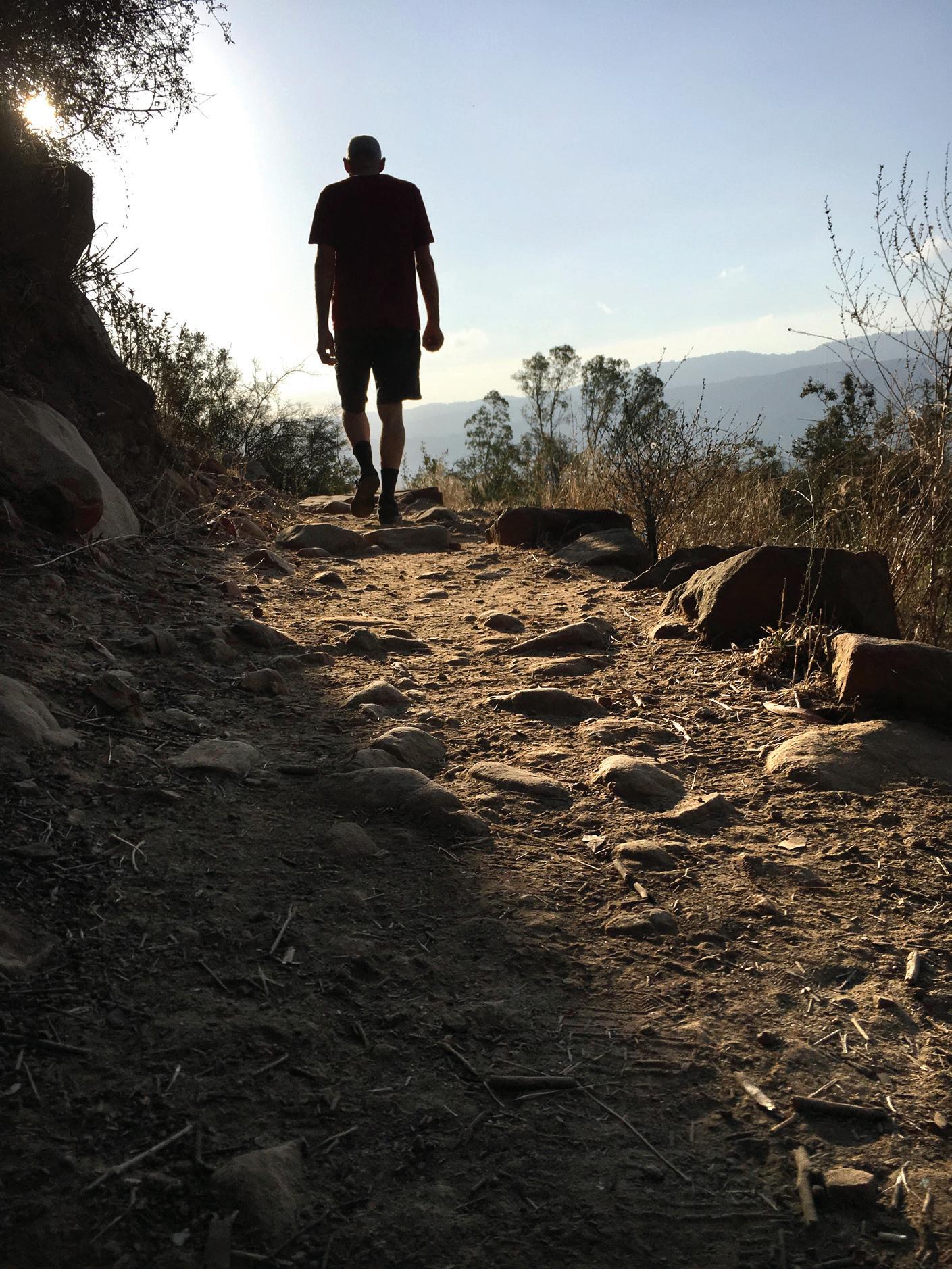
the movements of his body—sometimes unsteady on the stony path—felt like a metaphor for his life then.
I know you are struggling day by day, I observed.
He softly answered, “It is more like hour to hour.” n

than half a
Capture a storytelling photograph without showing a person’s face. Pay attention to body language. Watch how one sits or walks and where they do so. In European countries it’s not uncommon to see older men ambling alone with their hands folded behind them.
for
sharing
tips and life perspectives with readers. For more of his writings, visit davidlabelle.com and his blog at bridgesandangels. wordpress.com. iPhone 6s, 4.2mm lens
Email your best image—just one—with caption information, including an explanation of how it affects you, to gph@pioneer.coop. We may share submissions on our website and social media channels.
ISO 25, f/2.2 at 1/2959





























American Gold Reserve is releasing Government issued $5 Gold American Eagles completely free of dealer mark-up for only $359 each. These beautiful $5 Gold American Eagles are a perfect way to enter the gold market. They are set for immediate public release and will sell out fast.














Luscious Peach Recipes ~ Desserts Cookbook: $8 Comfort Foods Cookbook: $13

Tempting Zucchini Recipes ~ Casseroles Cookbook: $10 Everybody’s Favorites: $10 Soups Stews & Chowders: $10

Discover all 13 of our Recipe Contest cookbooks. Each is 8½-by-11” with index. Prices shown include postage and tax.
Please allow two - three weeks for delivery; include your email address if you would like a shipping confirmation.
ORDER BY MAIL: Submit payment with cookbook title, your name, address and number of cookbooks wanted to:
PAY BY PHONE: Call 503-357-2105 for credit card payments with Visa, MasterCard, Discover or AMEX. ORDER ONLINE: Visit www.ruralite.com and find Store.
2 3
of lightning fatalities are associated with outdoor recreational activities.
Do not use generators in enclosed areas. The same goes for grills, camping stoves or other small appliances that produce carbon monoxide. Pay attention to weather forecasts before you go canoeing or boating. Get off the open water as soon as you hear thunder.
Look up for power lines while fishing or sailing.
FACT: Fishing is the most common outdoor activity associated with lightning-related deaths.
If you hear thunder or see lightning, do not seek shelter under a tree. Going for a hike?
As summer sunshine brightens Eastern Oregon, from the Steens to the Elkhorns, it is the perfect time to continue enjoying outdoor recreation. Whether you’re boating on a lake, hiking a forest trail or relaxing in your backyard, remember the essential safety tips at left to keep your summer fun and hazard-free.
Lightning Awareness
Tent camping? Plan ahead, seek shelter in a hard-top vehicle or foursided building during a storm or at the first sight of lightning.

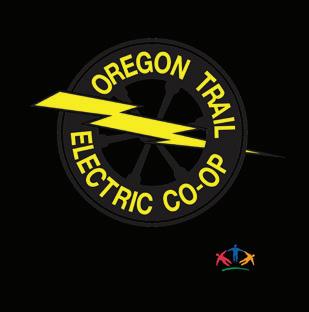
Thunderstorms can develop quickly, especially in mountainous or high desert areas.
• If you hear thunder, seek shelter immediately. Lightning can strike from 10 miles away.
• Install a weather alert app on your phone.
• Know the difference: A watch means conditions are favorable; a warning means take action now. n
4x5 round bales, Meadow Foxtail Orchard Grass. 4x4 Timothy, small square. 208-435-4637 or 208-435-4002; nas@cpcinternet.com. 1225
Reinforced custom-sized pond liners (39 cents/sqft). Hay covers, greenhouse covers, any width and length. Truck tarps and more. High-puncture and tear strength. Best price guaranteed. Celebrating 44 years in business. www.btlliners.com. 541-447-0712. 0426
Buying antiques and collectibles: advertising signs, porcelain signs, gas pumps, beer signs, antique toys, cast-iron coin banks, neon signs and more. Jason, 503-310-3321 or tjabaughman@yahoo.com. 0925
Buying American Indian collectibles, Navajo jewelry, blankets, rugs. CA/AZ baskets and beadwork. Quality paintings of the early Southwest and Americas. Call 760-409-3117 or send photos to amer.ind.baskets@gmail.com.
1984 Harley Davidson FLTC. Very good condition. One owner, extras. Interested? Call 208-267-7145. 0825
Well-preserved, street-legal 1953 Morris Minor Sedan. Licensed, insured and carefully stored in Bandon since 2001. Black, left-hand drive, red leather interior. Offers of more than $10K welcomed. Call/text 541-808-1069. 0925
’69 Mustang coupe 302. Automatic. Runs as is. $5K. Bill, 541-782-2096. 0825
Book restoration. Bibles, cookbooks, cherished family heirlooms. Beautiful work. We give renewed life, more durable than original, to last for generations. 775-537-7066; salacanstudio@gmail.com. 0825
Free materials. When church/government unite, enforcing Sunday Law, the “Mark” of the “Beast” is here. Don’t be deceived, be informed. Leave mailing address only, TBSM, PO Box 374, Ellijay, GA 30540. 888-211-1715; tbsmads@yahoo.com. 1225AR
Help Wanted
Older woman in Brookings, OR, needs regular help with easy yard work. Sometimes need to be driven to town in winter. Good pay. Text 707-951-1882. 0825
Ads 25 words or fewer are $35 a month. An extended ad of up to 35 words is $50 a month. Contact information is included in the word count. Phone numbers and emails count as one word.
Longer ads may be placed. Contact 503-357-2105 or info@pioneer.coop for pricing information.
Ads are for customers of member co-ops, public utility districts and municipals only. Subscribers and nonmembers may inquire about pricing at 503-357-2105 or info@pioneer.coop.
Ads must be direct and in first person, and are subject to approval and editing.
Closing deadlines (in our office): October issue—Aug. 28, 2025.
If submitting ad by mail, send appropriate payment with your name, address, email, phone number and the name of the electric utility that provides your magazine to: Marketplace, P.O. Box 1306, North Plains, OR 97133. Make check or money order payable to Ruralite.
We accept credit card payments for ads submitted by email. Send ad to info@pioneer.coop.
We want you. Apply now to teach classes at Art Center East in La Grande, OR, for fall and winter quarters. 541-624-2800; artcentereast.org. 0825
Miscellaneous
3 cemetery plots, Salt Creek Cemetery near Dallas, OR. $800 each. Open to offers on all. Message 503-457-8084. 0825
Granite cemetery markers at affordable prices. Will ship to most places. For more info: Joe, 541-815-8906 or highdesertmemorials.com; highdesertmemorials@gmail.com. 0825
Fort Sage Kennels, closing. AKC-registered Airedales. Females, 1 year old. Males 2-3 years old. 530-827-2271 or 530-249-7896. 0925 Plants, Garden Supplies
For sale: about 100 30-year-old black walnut trees in Eltopia, WA. 509-531-5899; janitorialex@yahoo.com. 0825
615 remote acres w/views. LOP tag eligible, fenced, 2 springs, year-round creek, cabin. $584K. Duke Warner Realty, 541-987-2363 or ddwr@ortelco.net. 0825
320 acres east of Adel, OR. Borders Hart Mountain views, Steens Mountain and Beaty Butte. Landowner tags, very rural. $179K. Due to injury quick sale. For maps: 541-659-1573 or thejugglingman3@gmail.com. 0825
Let me help you buy or sell ranch, farm and recreation property in OR. Fourthgeneration Oregonian, prior ranch owner. For sale: Klamath Marsh, OR. 173.65 acres. $2.5M. Guest Ranch Overlay. John Gill, 541-480-9161; johngill@landandwildlife.com. Land And Wildlife brokerage. 0825
Preppers paradise. Totally turnkey, off-grid, 5,200-watt solar, 3,900-sqft. custom home, 4 bd, 3 ba, daylight basement more than 2,000sqft. shop, very private 20 acres, 8-GPM well, 1,500-gallon propane tanks, 2 large backup generators. $1.549M. 760-382-8654.
40 acres, 30 minutes north of Ely, NV, in beautiful Steptoe Valley. Electricity nearby. $58.8K. 775-289-4906. 0825
10-acre mountaintop retreat, quiet solitude, timbered meditation trails. 3-bd, 2-ba mobile home, guest house, 20x20 shop, excellent well. 9 miles west of Creswell, OR. $495K. Bette, 541-953-4001. 0825
Recreational Rentals
Oceanfront cottage on the spectacular Central OR coast. Stunning views, sandy beach. Scoters, spindrift and seals. 2 bd and loft, all w/double beds. Rates and reservations: wavecatcherbeachrentals.com; relax@WaveCatcherbeachrentals.com, 541-740-9953. 0825
Enjoy your ideal Maui getaway. This updated 2-bd, 2-ba condo sleeps 4 and features a charming “surf shack” design. Just half a block from a beautiful beach, it’s perfect for morning strolls and sunsets. Plus, you’re steps away from shops and restaurants at Azeka Plaza. tinyurl.com/MauiGetaway.
Beautiful coastal mountain outdoor events venue on the Nehalem River. Off Highway 26 just 25 minutes from Seaside and 45 minutes from Portland, enclosed 30x60 white tent, 20x24 deck overlooking the Nehalem River and beautiful wilderness background. Book the weekend or by the hour with camping available. Schedule a tour today. 971-489-3960. 0925
$275/night VRBO vacation rental. Only 1/8 of a mile from Lake Coeur d’Alene, ID. t.vrbo.io/EgtTnZc7HSb. 0925
Recreational Vehicles
2007 17-ft. Nash trailer. Self-contained. Lots of extras. Sleeps 5 to 6 (3 bd). $11K. Visit “Dean Wheeling” on Facebook Marketplace. 541-444-1394. 0825
Resorts, Camps, Tours, Lodges
Cruises: Alaska, Caribbean, Mediterranean, Panama Canal, Hawaii and more. River cruises, safaris, resorts. UdoU Travel LLC: www.udoutravelllc.com, 541-256-0100, cindygreenup@gmail.com. 1125
Services
Dawn Till Dusk Masonry. Brick, block, stone and pavers. Small jobs and repairs welcome. dawntillduskconstructionmasonry.com. 541-388-7605, 541-410-6945. License #245760 bonded and insured. La Pine, OR. 0825
Blue Mountain Defensible Space LLC Wildfire Fuel Reduction: clearing brush, thinning trees, animal habitat enhancement. Expert service. Grant money available OR, WA, ID. Bluemountainbrush@gmail.com, 509-399-3473; Bluemountainbrush.com. 0126
Situations Wanted
71-year-old country girl. Received many responses, unfortunately from too far away. Looking for Brookings, OR, area only. Snowbirds? Be a bit persistent; I’m overwhelmed with replies. Please text me at 707-951-1882.
Old carpenter tools, planes (wood/metal), levels, chisels, slicks, adzes, axes, hatchets, handsaws, old rulers, spoke shaves, wrenches, shipwright tools, old tool chests. 503-659-0009, 971-666-0659. 0825
Gold, silver, coins/currency, buy, sell. Collections wanted. Fair prices paid. 44 years in retail store. Baker City, OR. 800-556-2133, garrymclin@aol.com. 1025
Buying American Indian Collectibles, Navajo jewelry, blankets, rugs. CA/AZ baskets and beadwork. Quality paintings of the early Southwest and Americas. Send photos to amer.ind.baskets@gmail.com or call 760-409-3117. 1025
Cash paid for old gas station and oil company signs, pumps, globes, metal oil cans. Good condition. Discreet cash settlement. Clifton Jones, collector, 512-413-4459. 1225
Want a fresh take on salads? More than 250 readerrecommended recipes are listed in an 8½-by-11-inch indexed book for $8, postage included.


To order by mail, send payment and number of cookbooks wanted along with your name and address to Ruralite Cookbooks, P.O. Box 1306, North Plains, OR 97133.
To pay with Visa, MasterCard, Discover card or American Express, call 503-357-2105.
To order online, visit www.ruralite.org. Allow two to three weeks for delivery.

United
A Spiritual Base Camp On The Way To Paradise. Mashell Avenue North P.O. Box 205 Eatonville, WA
Facebook: Eatonville United Methodist Church of Washington OPEN HEARTS OPEN MINDS OPEN DOORS OPEN TABLE WORSHIP SERVICE BEGINS AT 10:30 a.m.
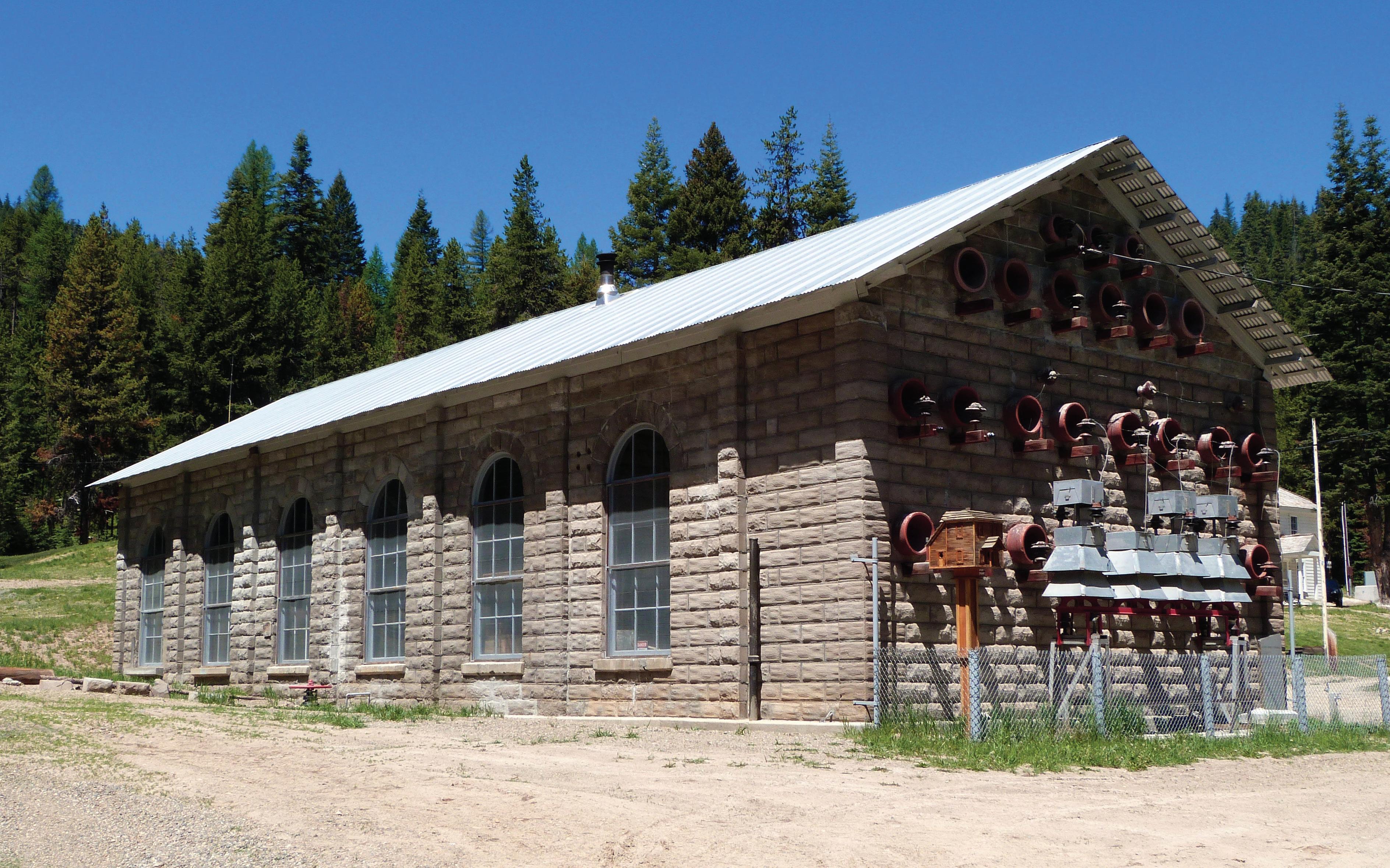
By Ethan Peasley, OTEC–EOU Rural Scholarship Recipient
Eastern Oregon didn’t get electricity overnight. It took decades of work, largescale federal projects and a lot of problemsolving to bring power to places like Baker, Grant, Harney and Union counties.
Today, electricity feels like something we’ve always had—but back in the early 1900s, most people living in rural Eastern Oregon had no access. Communities like Baker City had electricity early on thanks to local power plants, but it was a totally different story for people living in the country.
In Grant County, one of the earliest sources of power was Fremont Powerhouse, which was built in 1908 to run a
gold mine. It remained in operation until the late 1960s and helped power the area long before any big public power systems reached that far.
In Union and Baker counties, towns had their own small power setups, usually run by local companies or the city itself. But outside of town, there weren’t many options, mostly because it was expensive to run power lines across such a large, rough landscape.
Everything started to change in the 1930s when the U.S. government stepped in with President Franklin D. Roosevelt’s New Deal public works projects. It built many large hydroelectric dams, such as Bonneville Dam in 1938 and Grand Coulee Dam in 1941. In addition to producing power using the Columbia River,
these new federal dam projects provided much-needed jobs during the Great Depression. They also provided irrigation water for farms, improved flood control and created new recreation opportunities.
But those dams were only part of the short-term solution. The government also had to figure out how to get power to people who lived farther away. This led to Congress creating the Bonneville Power Administration in 1937. BPA’s job was to sell power from these hydroelectric projects and build the transmission infrastructure to deliver it throughout the Pacific Northwest.
BPA totally changed the game. It offered cheap, consistent electricity to public utilities and cooperatives, and it didn’t charge more for people who lived in rural

X Union was one of the first towns in Eastern Oregon to gain electricity. Union Electric Power and Light Co. was organized in the spring of 1890. The company bought the flouring mill site and gained hydropower. Within a matter of months, incandescent electric lights were being burned. A few streetlights helped illuminate the night.
X A 1948-49 survey revealed only around 10% of Harney County’s rural farms and homes had electrical service.
areas. This helped make it affordable to finally extend power throughout Eastern Oregon.
With help from another federal program, the Rural Electrification Administration, BPA helped fund local electric cooperatives and public utility districts that could build out power systems in smaller communities.
It wasn’t easy. It took years to build poles and string wires across mountains, forests and open land. Plus, World War II slowed everything down because the government was using most of the materials, such as copper and steel, for the war effort.
By the late 1940s and into the 1950s, though, things began to come together. Most of Eastern Oregon’s counties— including Baker, Grant, Harney and Union—were finally connecting to the grid. Harney County was one of the last, likely due to its remoteness and smaller population.
In Union County, towns such as La Grande already had electricity early on, but rural areas still needed co-ops to reach them. The same thing happened in Baker and Grant counties, where local systems were connected to BPA power and expanded outward.
BPA didn’t just stop after those early years. It continued to grow and today supplies nearly one-third of the power used in the entire Pacific Northwest. It produces electricity using 31 federal dams and a nuclear plant, with a significant portion coming from major hydroelectric projects, such as The Dalles Dam and John Day Dam. This is a big deal for places like Eastern Oregon because co-ops like Oregon Trail Electric Cooperative get nearly all their electricity from BPA. It’s clean, renewable and extremely reliable.
The story of electrification in Eastern Oregon is really a story about persistence. The terrain is rough, people live far apart and it would’ve been too expensive for private companies to do it alone. However, thanks to government investment, new technology and a lot of hard work by local communities, power finally made its way across the region. Today, thanks to that history, homes, farms and small towns across Eastern Oregon can depend on reliable, affordable electricity—something we definitely should not take for granted. n
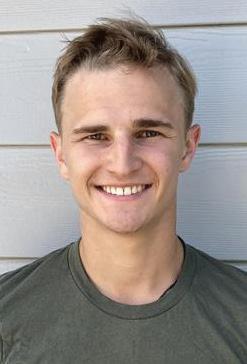
Ethan Peasley is from Burns. In 2022, he graduated from Harney High and was awarded the OTEC-EOU Rural Scholarship. Ethan recently completed his third year at Eastern Oregon University and will graduate in the summer of 2026. After receiving his bachelor’s degree, he plans to further his education and achieve a doctorate in physical therapy.
Nature surprises us through sunsets, picturesque landscapes and even by friendly wildlife visits to your backyard.
“We were sitting at the table in the patio about to have dinner, and here came the deer,” Robbie Strand says.
To submit your photo, email a JPEG to photos@pioneer.coop. Include “Before You Go” in the subject line and share a bit about what inspired you to make your photo. n
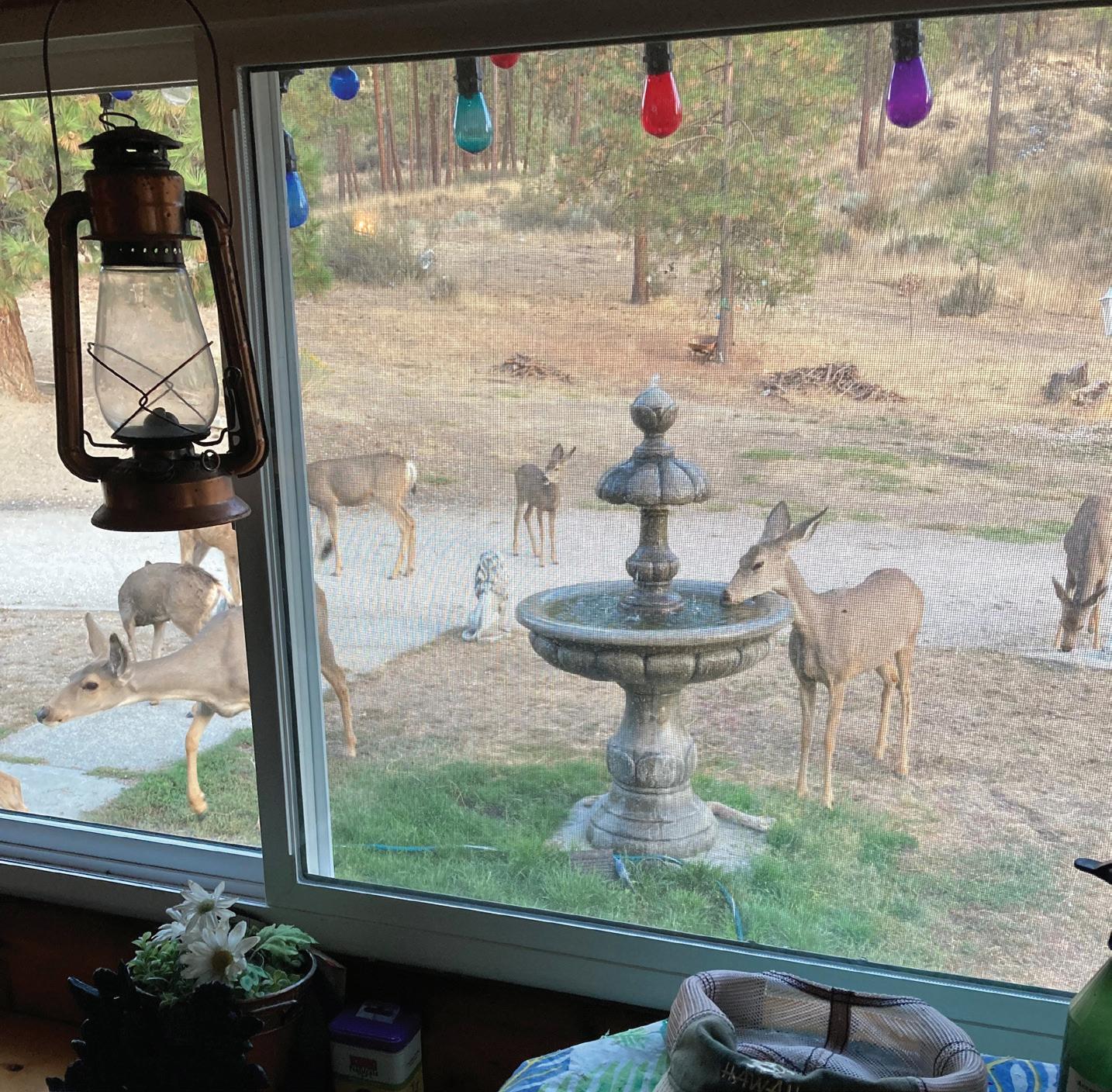
A message from the
Be aware!
Be prepared!
When you go outdoors, wear an EPA registered insect repellant, and protective clothing. The best defense is… defense, it turns out.
Check everywhere!
Ticks are tiny and can be found almost anywhere outdoors, year round! The best prevention is to pay attention. Ticks suck, but being outdoors shouldn’t. Learn more at
When you come back inside, take a shower, and check everywhere! We mean everywhere: Up top! Bend over! Don’t be scared.
If you do get a tick, there’s no need to panic. Follow safe removal instructions, and call your doctor with any questions!














What Stauer Clients Are Saying About Our Knives







Impossible Price

“Outstanding knife of high quality and a great price. I now have a number of your great cutlery in my growing collection!”
— Robert F., Richardson, TX
We






know you. You’re not interested in everyday, run-of-themill, common cutlery. You want something with a story, a unique feature that you can brag about. We’ve got just the thing for you. Our Mighty Conifer Knife is a unique tool with a Damascus steel blade and a handle crafted from an enhanced and stabilized natural pinecone. While our competitors are charging hundreds for similar knives, we’re o ering the Mighty Conifer for JUST $99! at’s what we call our Stauer Impossible Price.

Join more than 389,000 sharp people who collect stauer knives
Each pinecone — and therefore, each knife — has its own unique characteristics. And the back of the handle features hand tooling, a further demonstration of each piece’s individual nature.
e blade is nothing to sco at either. Constructed of Damascus steel, a modern reworking of the legendary steel forged by ancient swordsmiths, this nearly 5-inch blade features 256 layers of steel that have been folded on top of each other to increase its durability. Our competitors are charging hundreds for boring, run-of-the-mill knives with no features worth bragging about. We’re asking JUST $99 for a knife unlike any you’ve seen before!
With its full-tang construction and high-quality genuine leather sheath, the Mighty Conifer Knife is the perfect blade for the person









who wants to stand out. CALL NOW! If you’re one of the rst 700 587 callers for this ad, we’ll throw in a pair of Stauer 30x60



Stauer 30x60 HD Pocket Binoculars a $99 value with your purchase of the

Knife Speci cations:
• 9 ½" overall length. Full-tang construction
• Damascus steel blade and natural pinecone handle
• Genuine leather sheath
Mighty Conifer Knife
$299 $99* + S&P Save $200

HD Pocket Binoculars — a $99 value — ABSOLUTELY FREE!


Satisfaction guaranteed or your money back!









*You must use Insider Offer Code: MCK249-03 to get this price. California residents please call regarding Proposition 65 regulations before purchasing this product.
1-800-333-2045
Your Insider Offer Code: MCK249-03

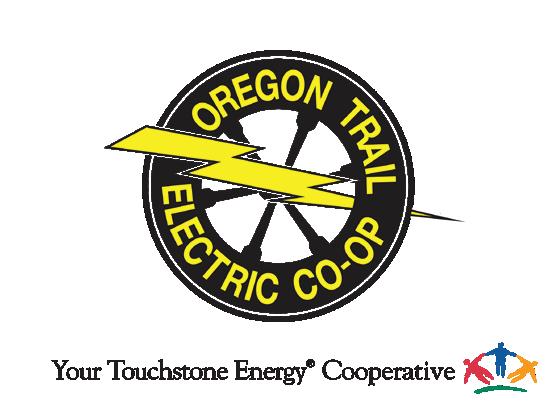
District Offices
4005 23rd St. P.O. Box 226
Baker City, OR 97814 541-523-3616
567 W. Pierce St. Burns, OR 97720 541-573-2666
400 Patterson Bridge Road P.O. Box 575
John Day, OR 97845 541-575-0161
2408 Cove Ave. La Grande, OR 97850 541-963-3155
otec.coop communications@otec.coop Report Outages at 866-430-4265

Facebook.com/OTECoop

Follow Us on Instagram otec_coop

Follow us at x.com/OTECoop (@OTECoop)
Board Members
President G. “Austin”
Bingaman, Union County
Vice President Gary Miller, Grant County
Secretary-Treasurer
Cory Miller, Union County
Aletha Bonebrake, Baker County
Robert Cargill, Harney County
Charlene Chase, Baker County
Jeff D. Clark, Union County
Seth Musgrove, Union County
Wayne Overton, Baker County
Les Penning, CEO
Ron Williams, Attorney
At Oregon Trail Electric Cooperative, reliability isn’t just a promise. It’s a principle that powers everything we do.
You expect the power to be there the moment you flip a switch. Previous experiences have taught you that you can rely on this fact. Most of the time, electricity continues to flow, reliably powering your home or business, without you giving it a second thought.
In fact, OTEC’s power reliability compares favorably with other electricity providers in the nation, with OTEC members experiencing just 187 minutes—a little more than 3 hours—of power interruptions a year, while the average U.S. consumer experiences roughly 330 minutes—51/2 hours— of power interruptions a year, according to the U.S. Energy Information Administration.
At OTEC, we often talk about reliability, both in what we are doing and how we can improve. This effort to continually improve our reliability is demonstrated through ongoing investments in maintaining and upgrading our equipment and systems, including $5.8 million in system improvements in 2025.
But reliability at OTEC goes beyond the grid. It’s about trust. It’s about knowing that your cooperative is guided by the values of safety, integrity and community as reflected in the Seven Cooperative Principles. True reliability means consistently showing up and acting in the best interests of you, our member-owners.
Whether it’s responding to outages, answering questions about your bill, providing you with a quote for a service extension, helping you find new, energy-efficient solutions to help you save money or simply answering your call, we can be counted on to show up, every time.
One consistent factor that helps determine our reliability is the men and women who work for OTEC. Every month, OTEC offices receive about 2,750 calls and 4,000 in-person visits from memberowners who rely on our professional workforce to meet their needs. Just as we invest in equipment and technology upgrades, as a utility we must invest in standard and highly specialized training for our employees to be able to better serve you, now and in the future.
We appreciate you as an OTEC member-owner and strive every day to gain and maintain your trust in the utility you own—OTEC. We are proud to represent your needs as a cooperative, and we’re honored to serve you with the reliability you deserve.
Sincerely,
Les Penning